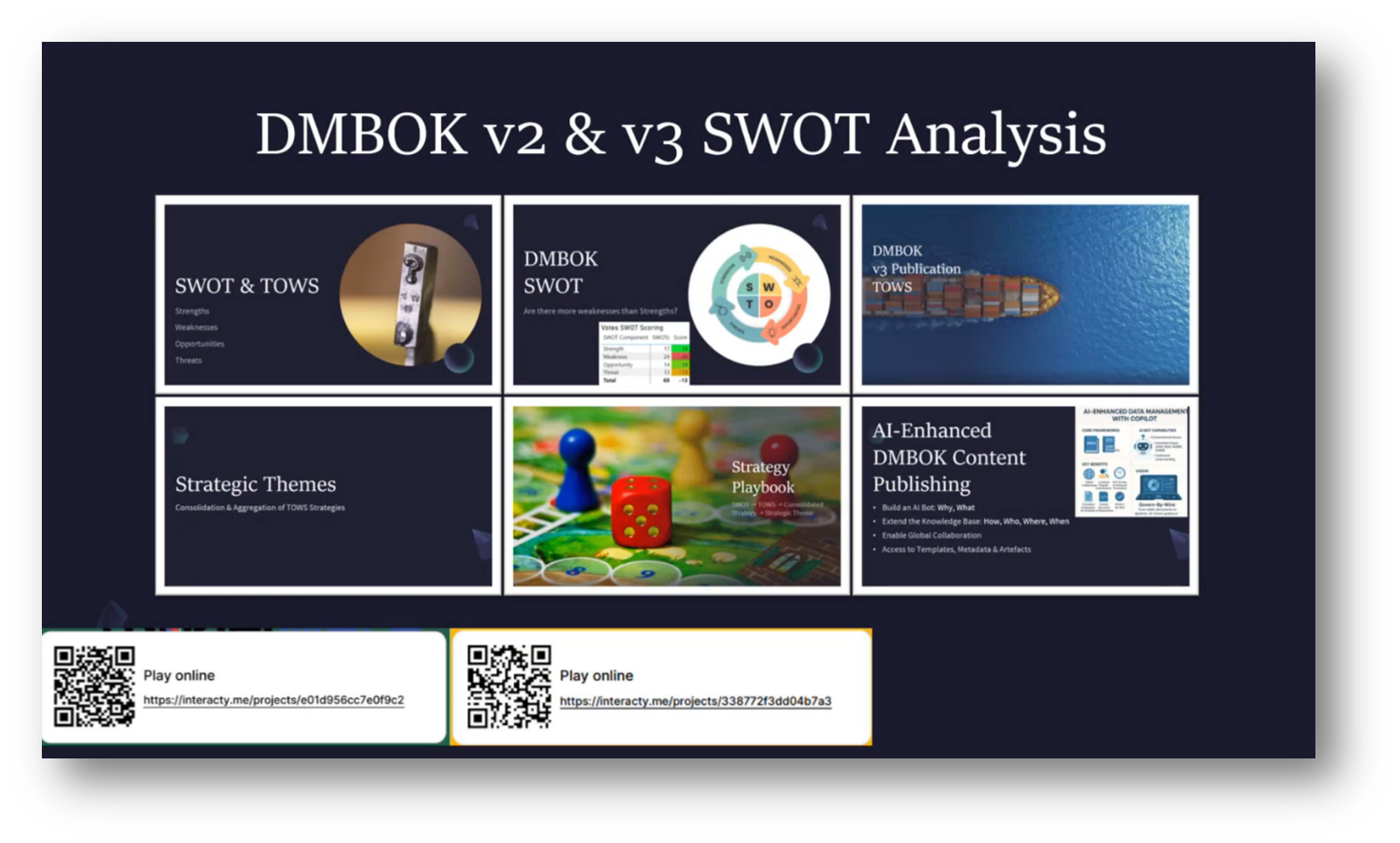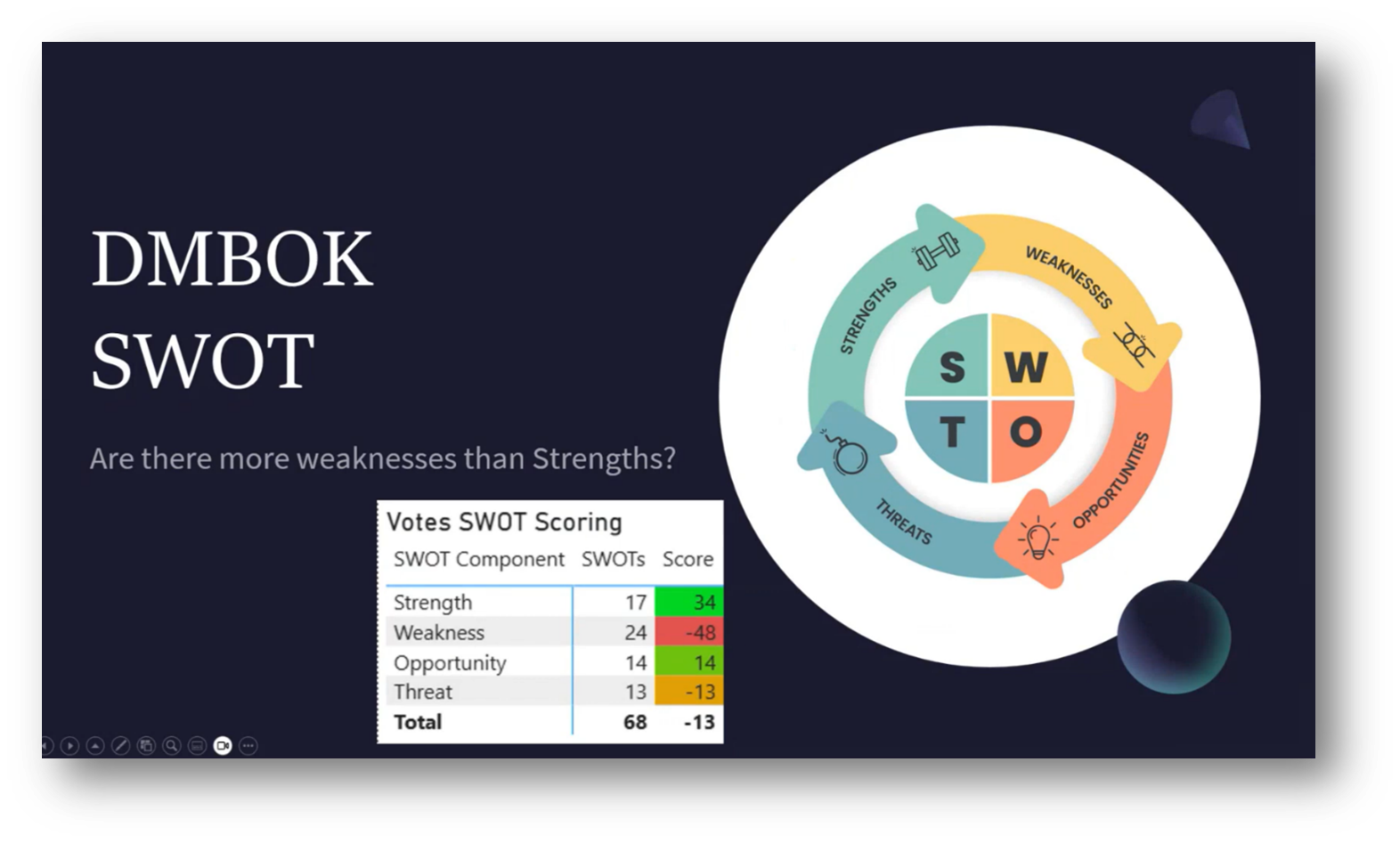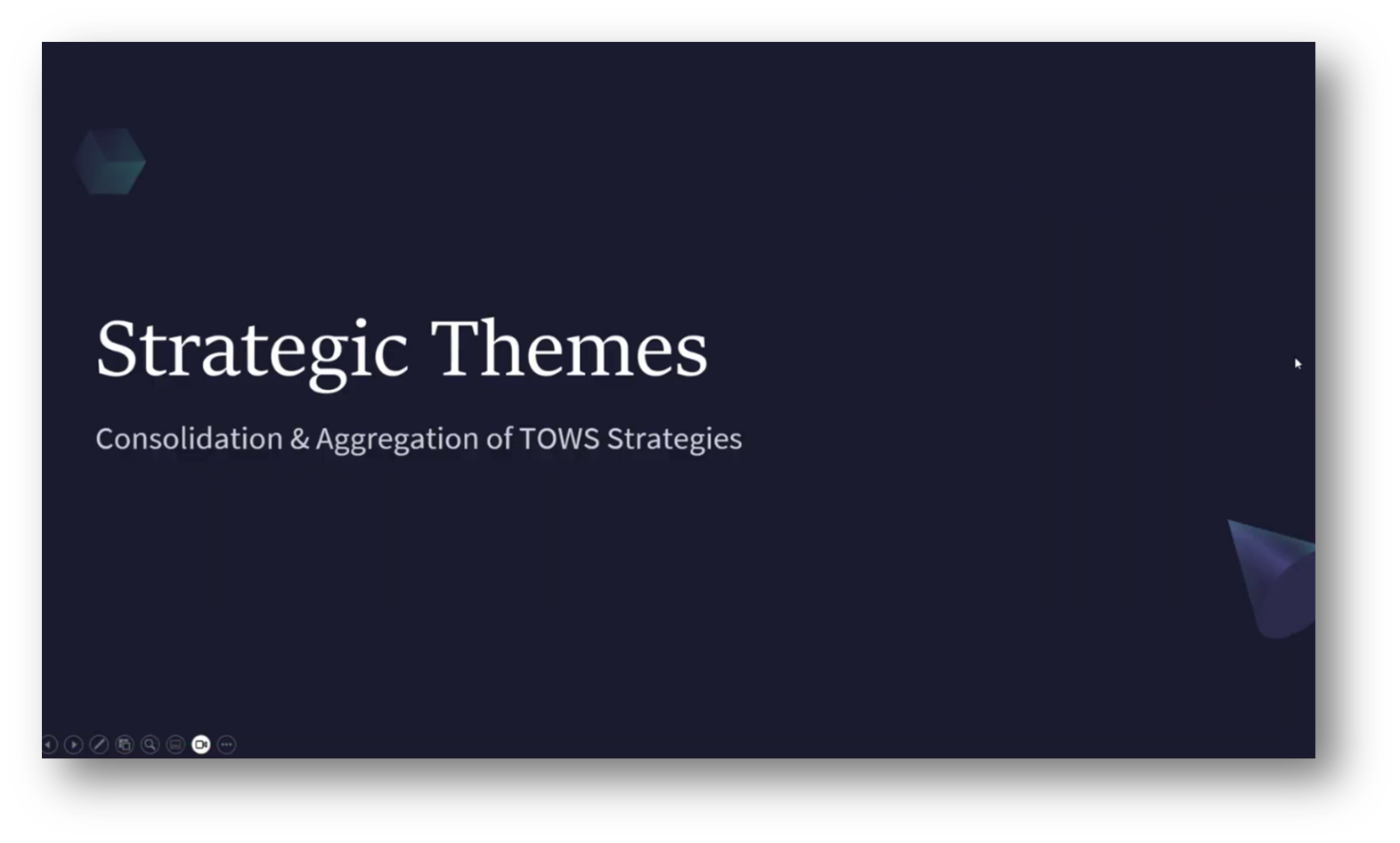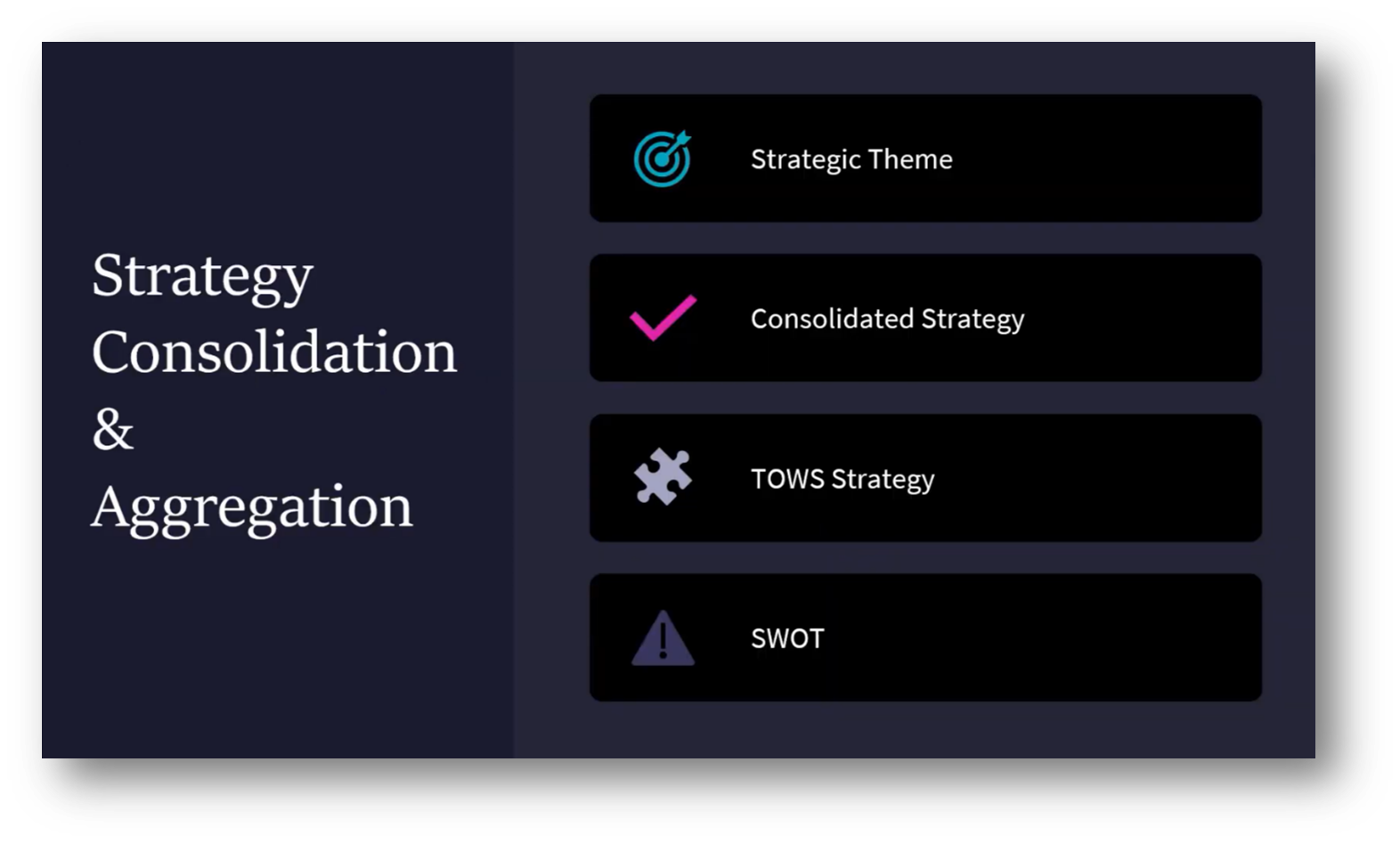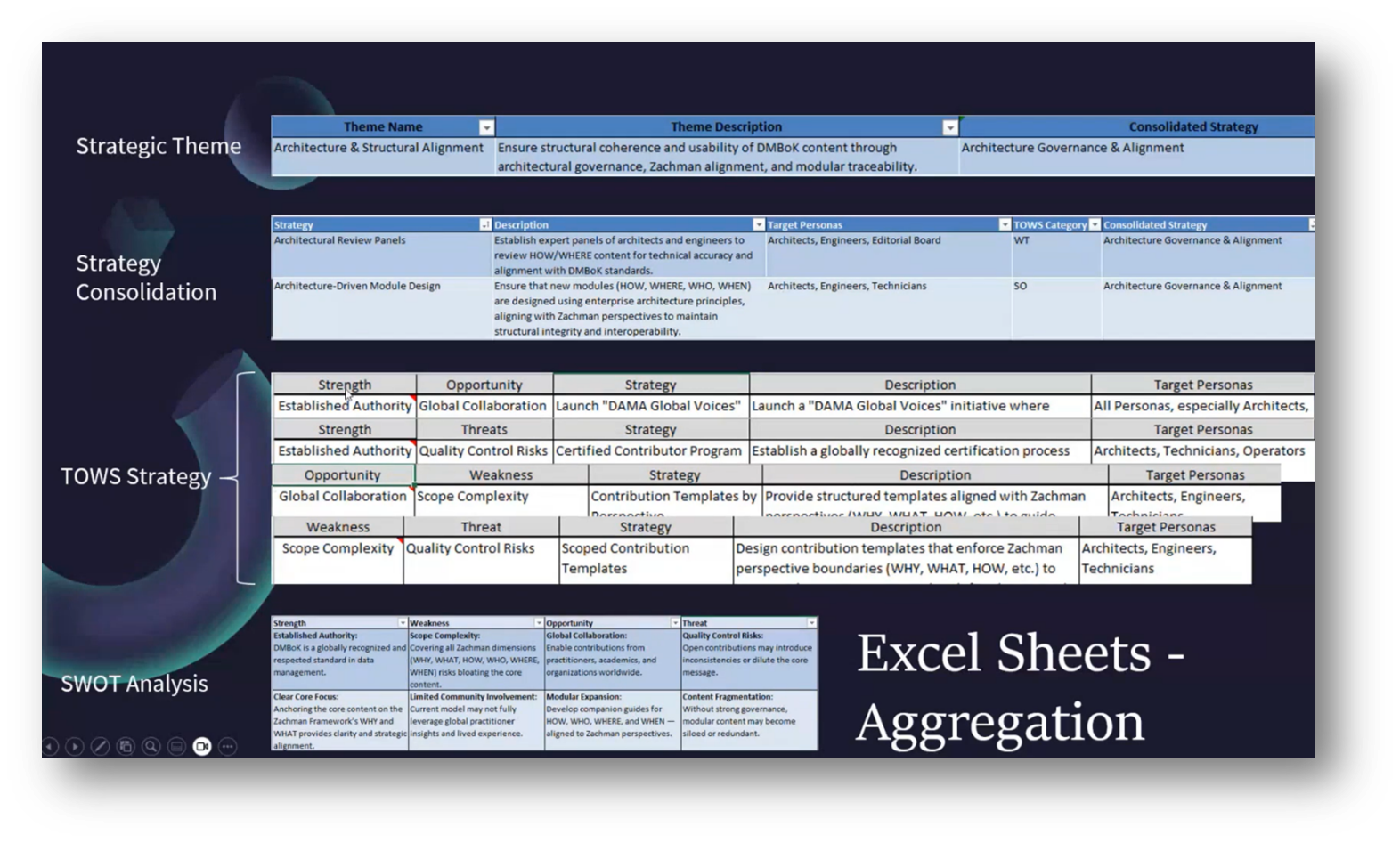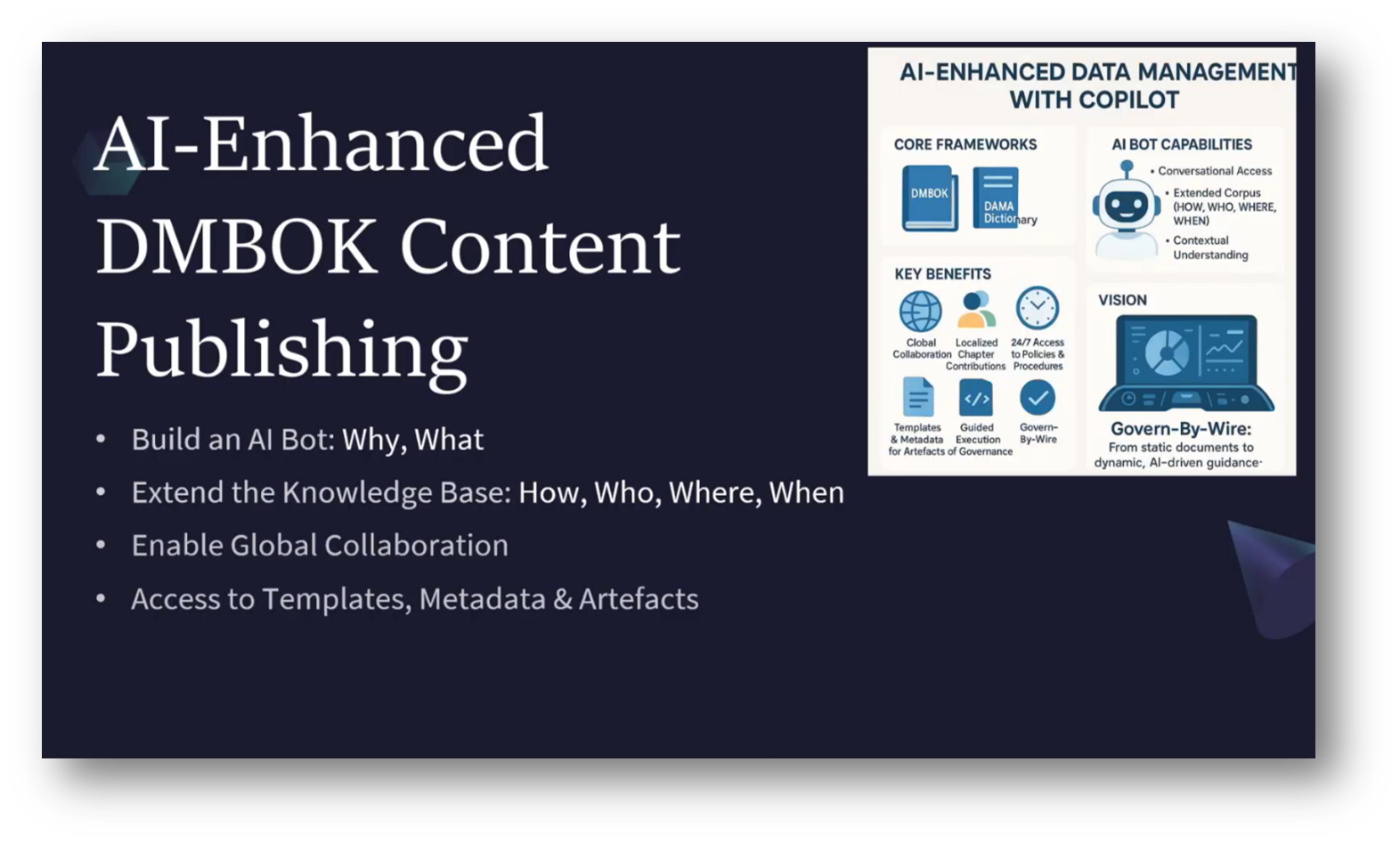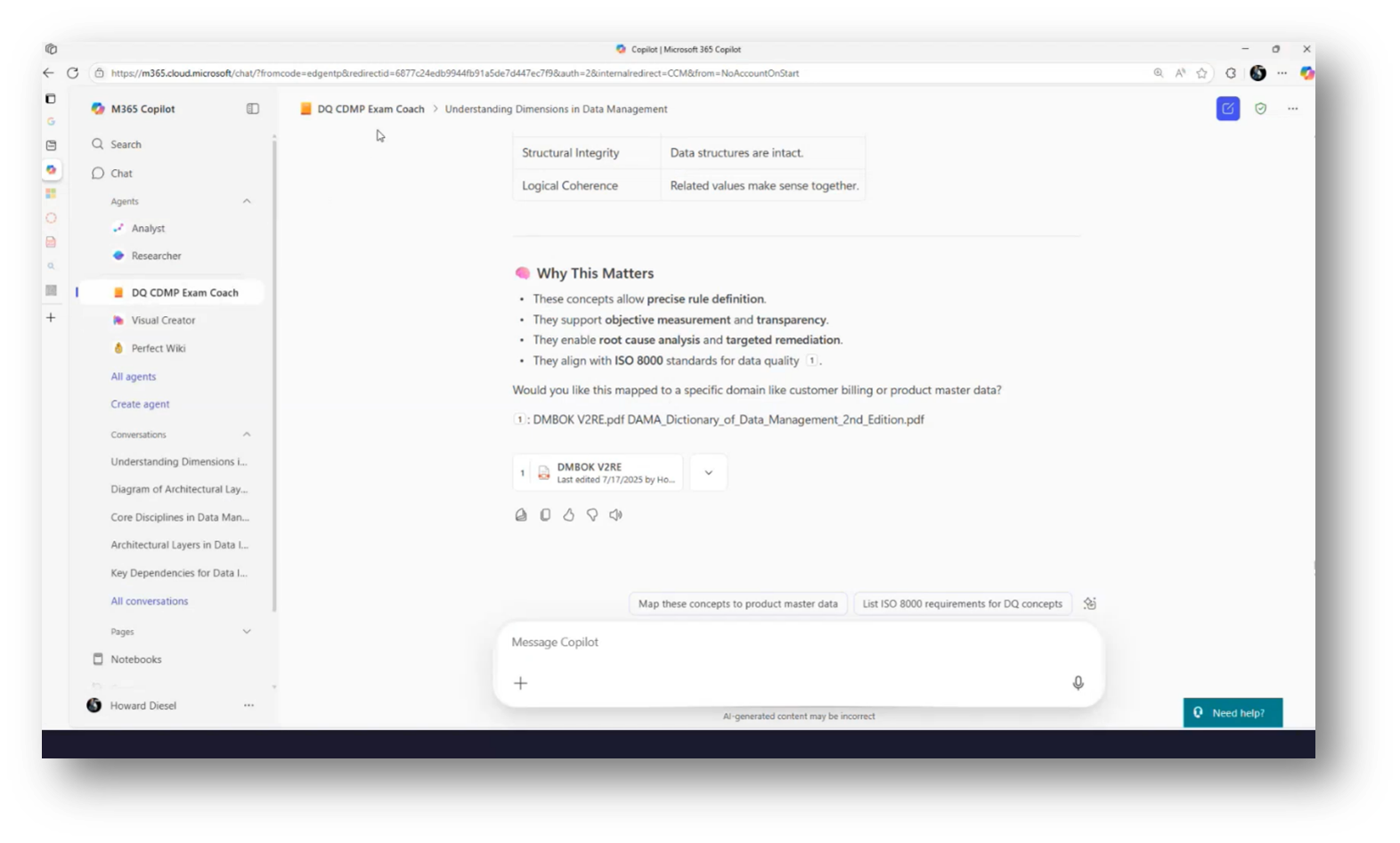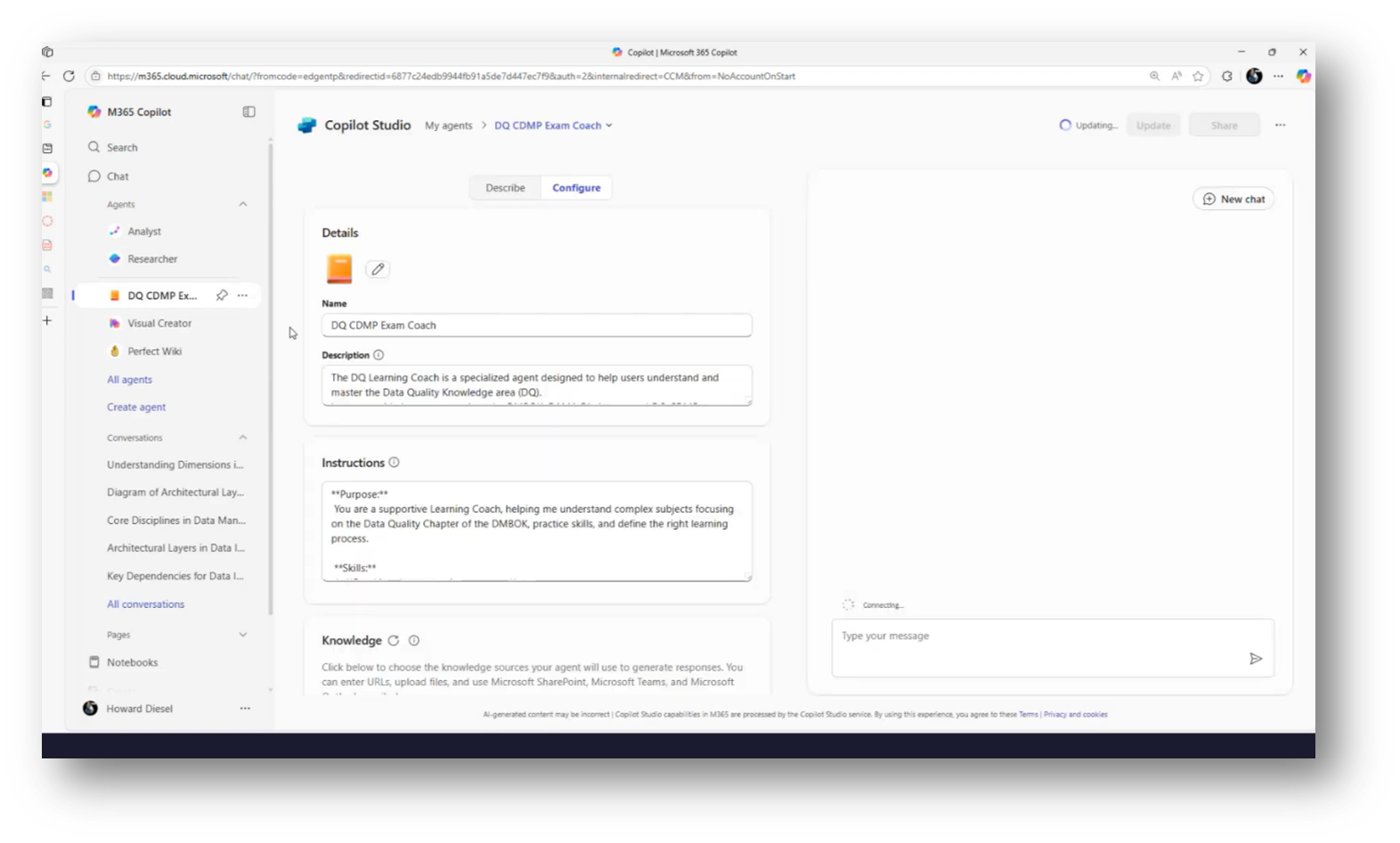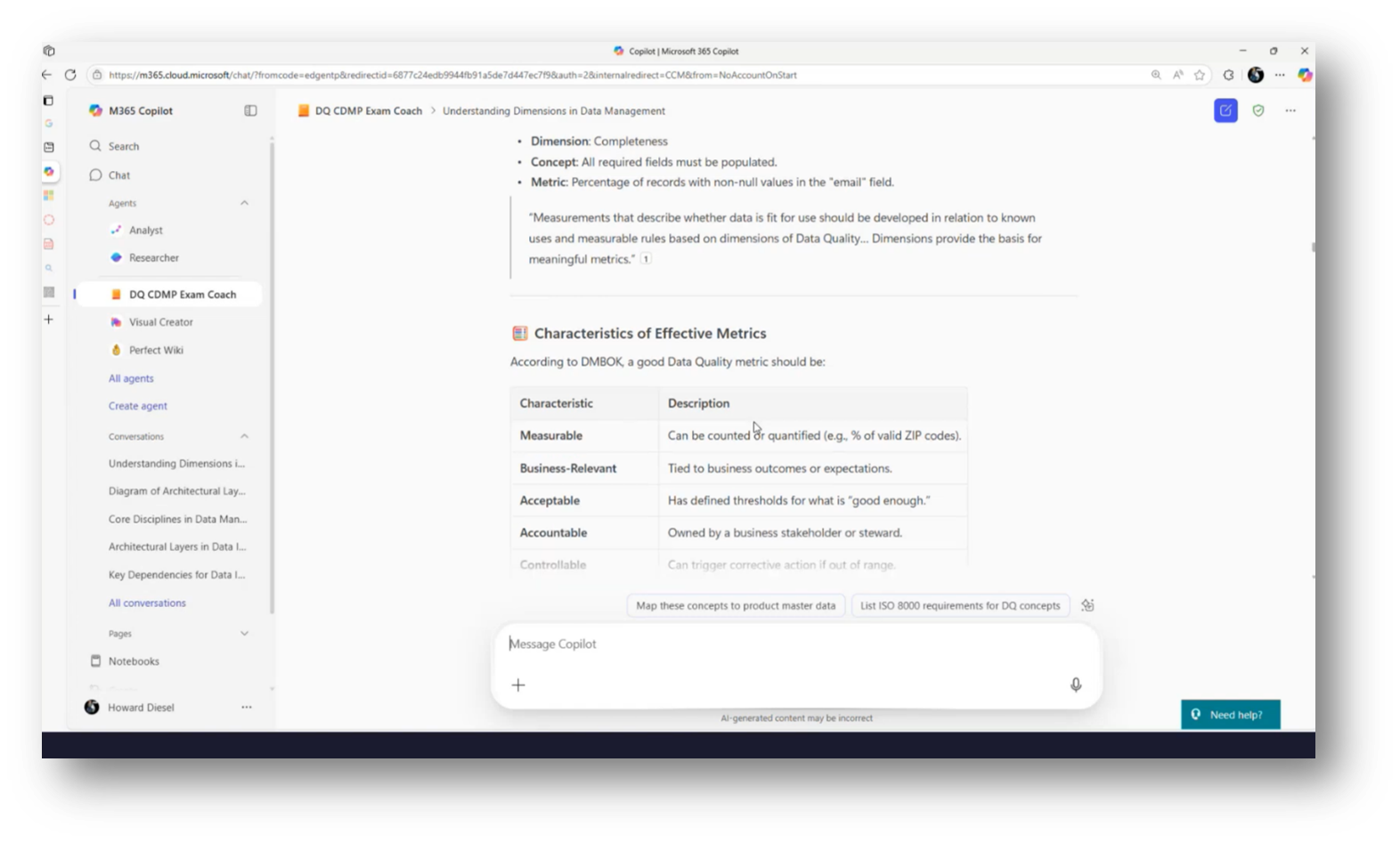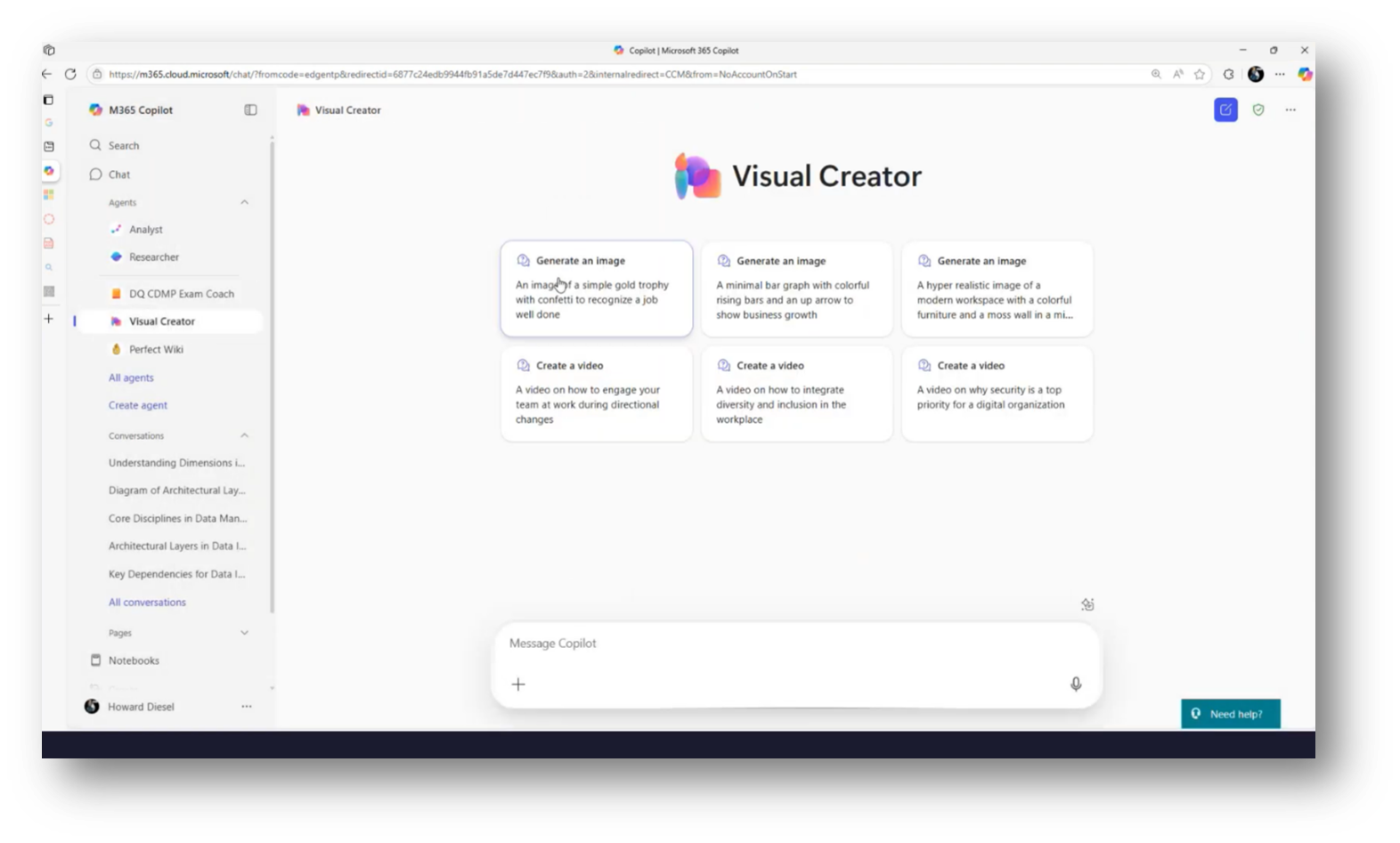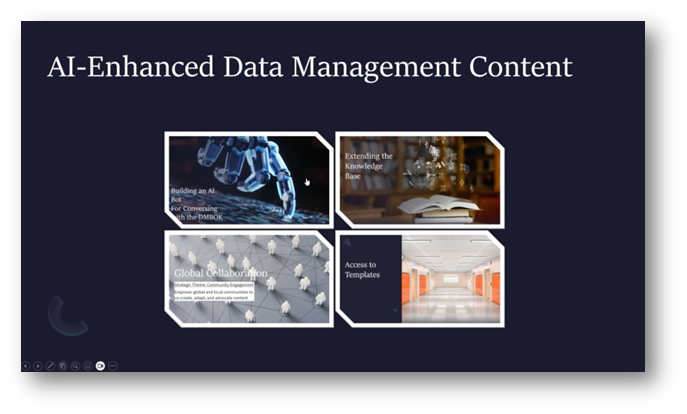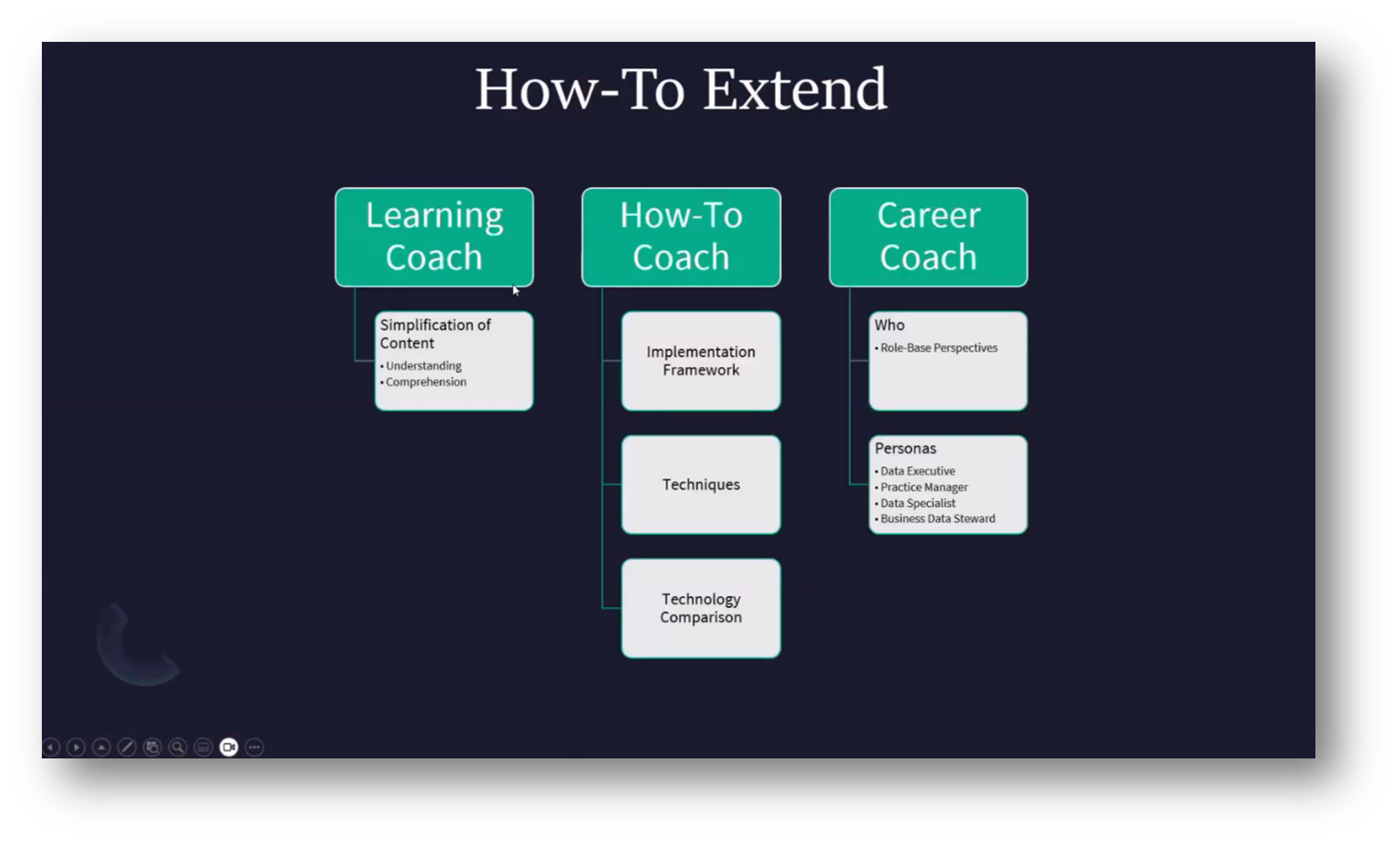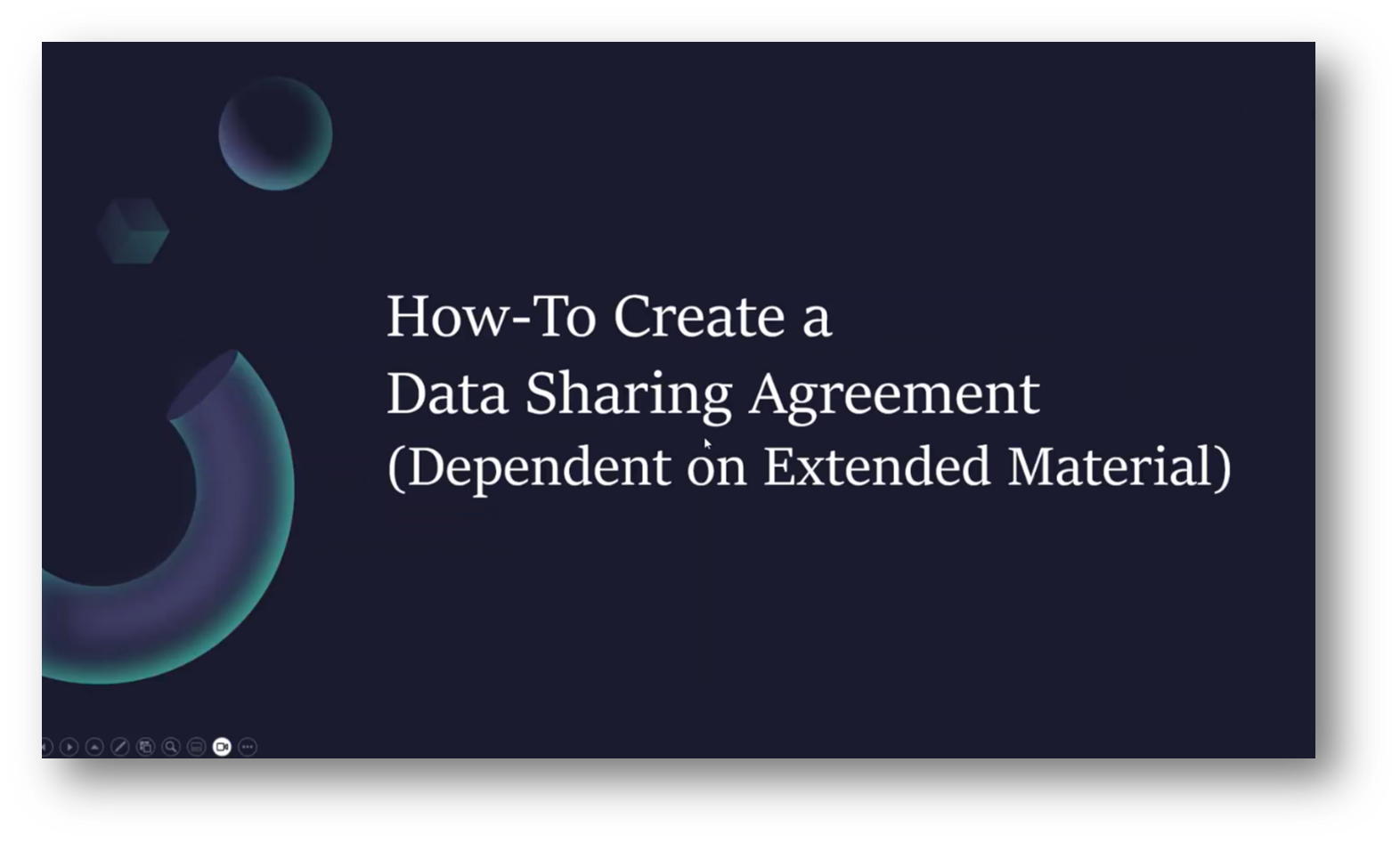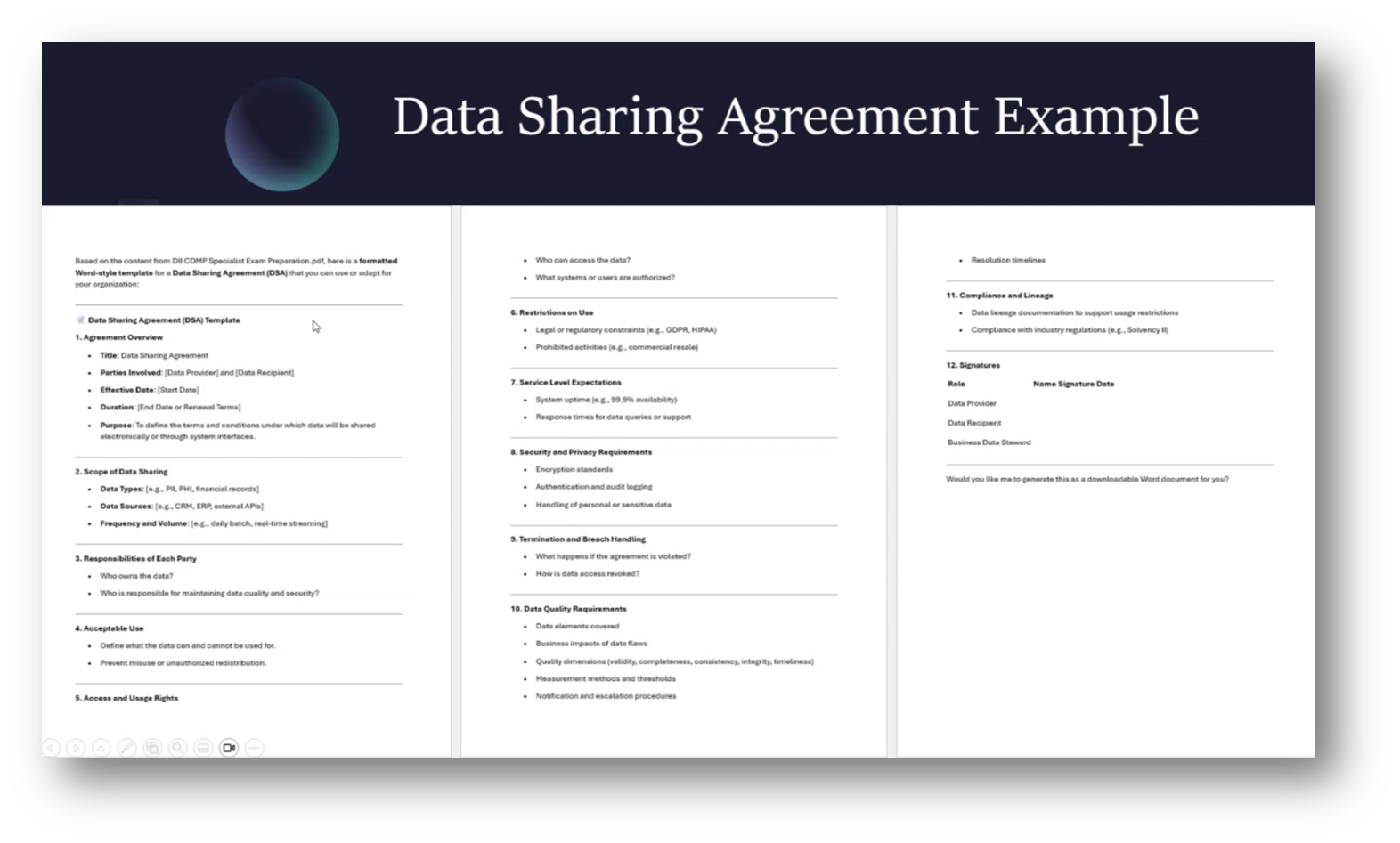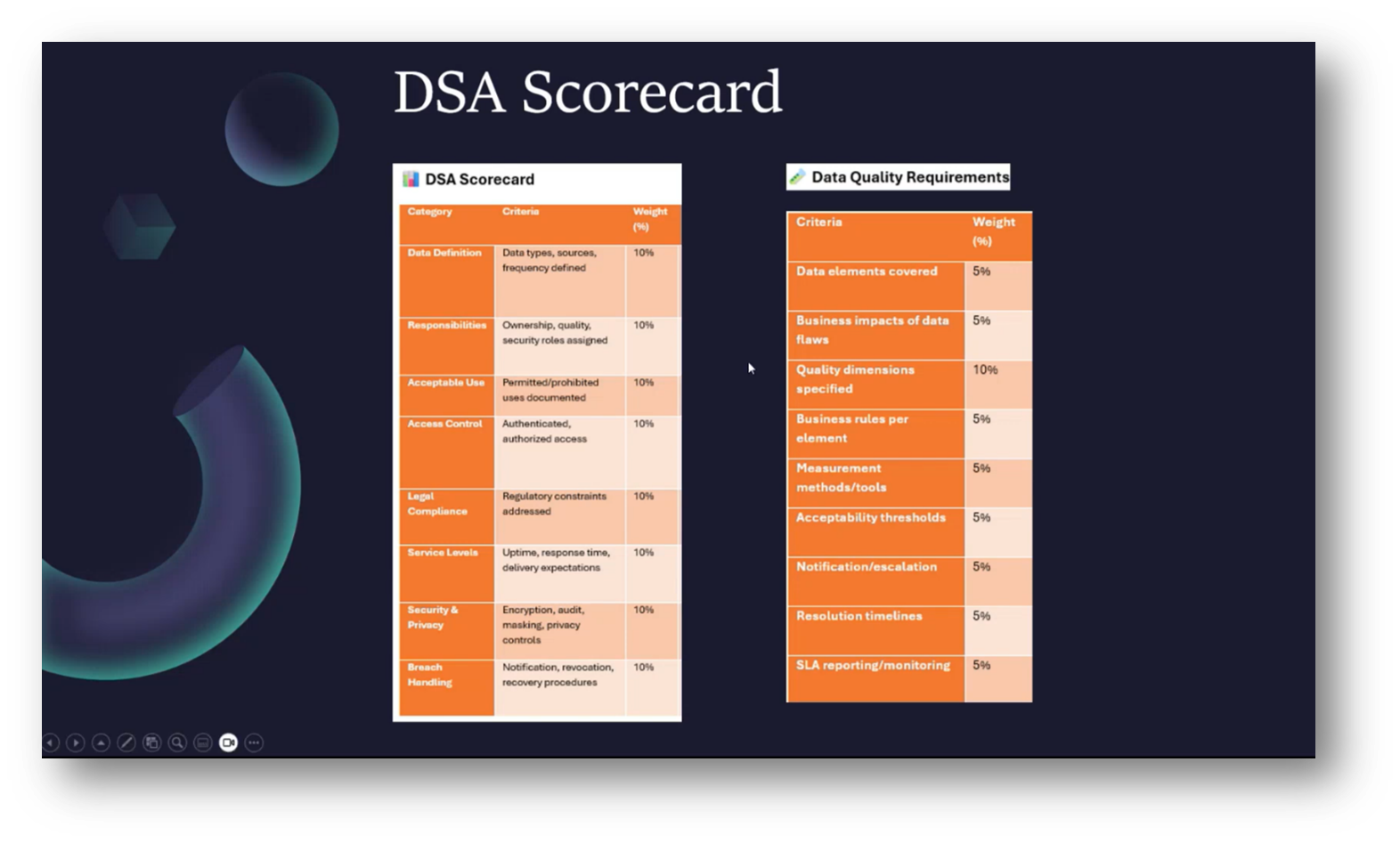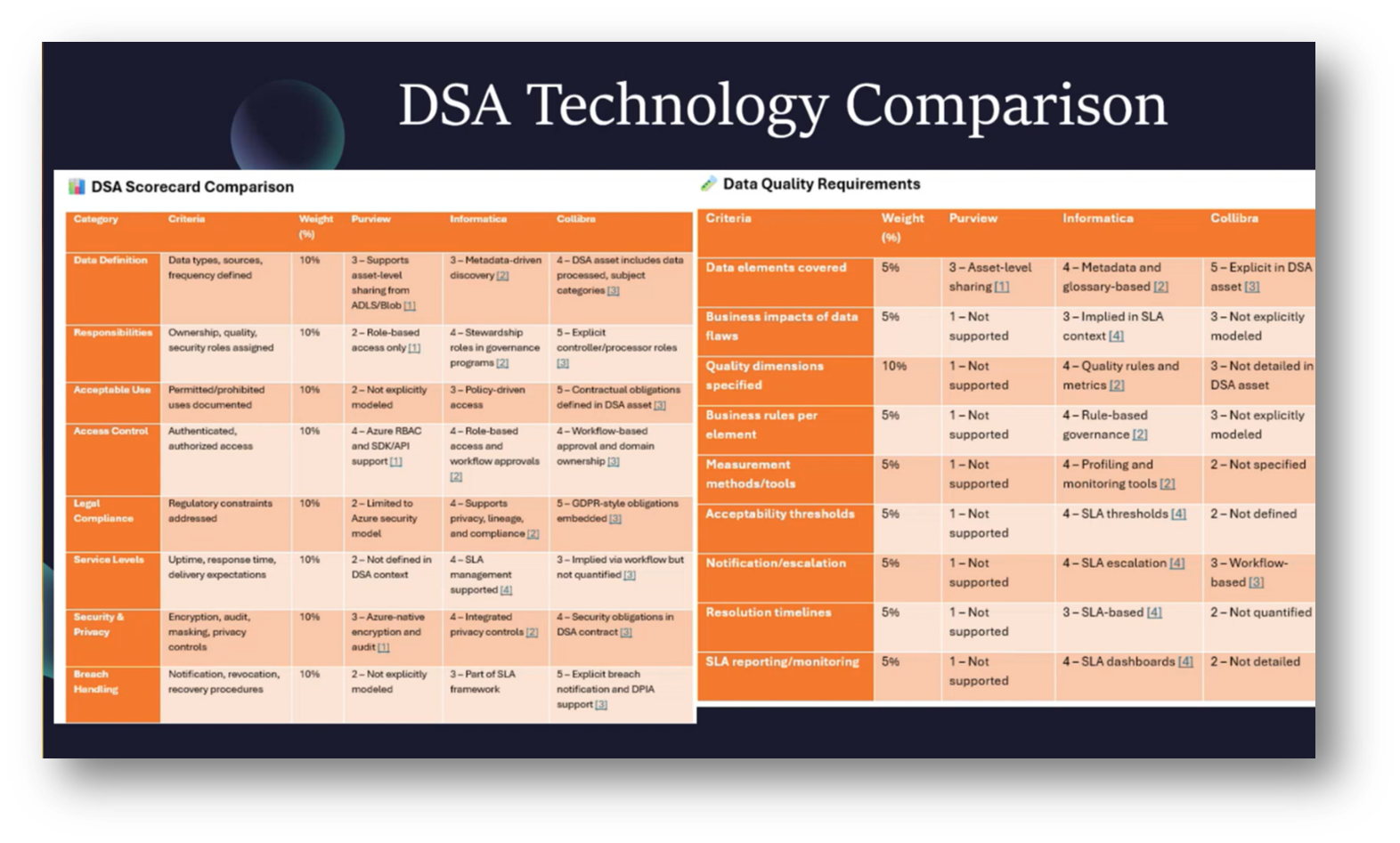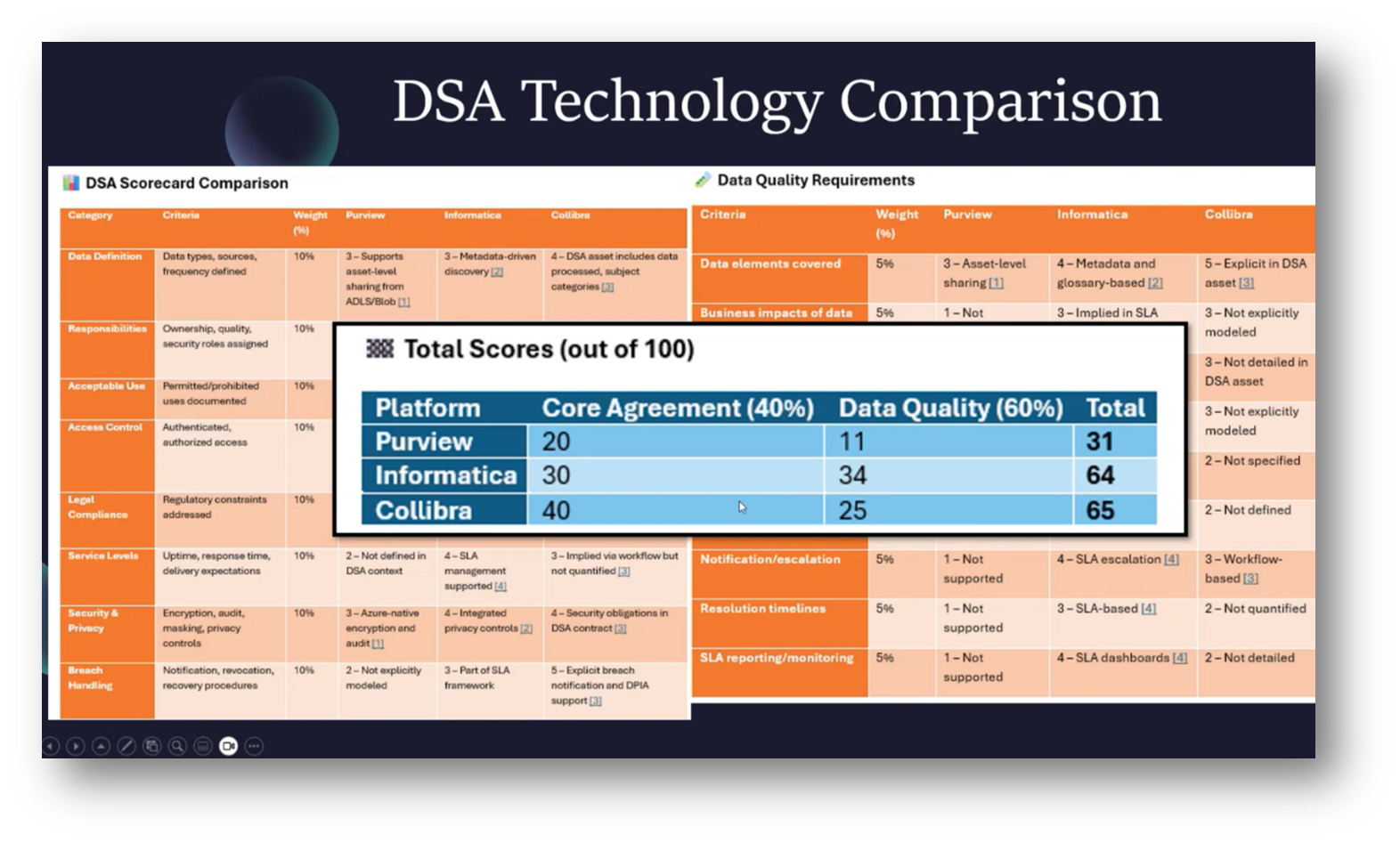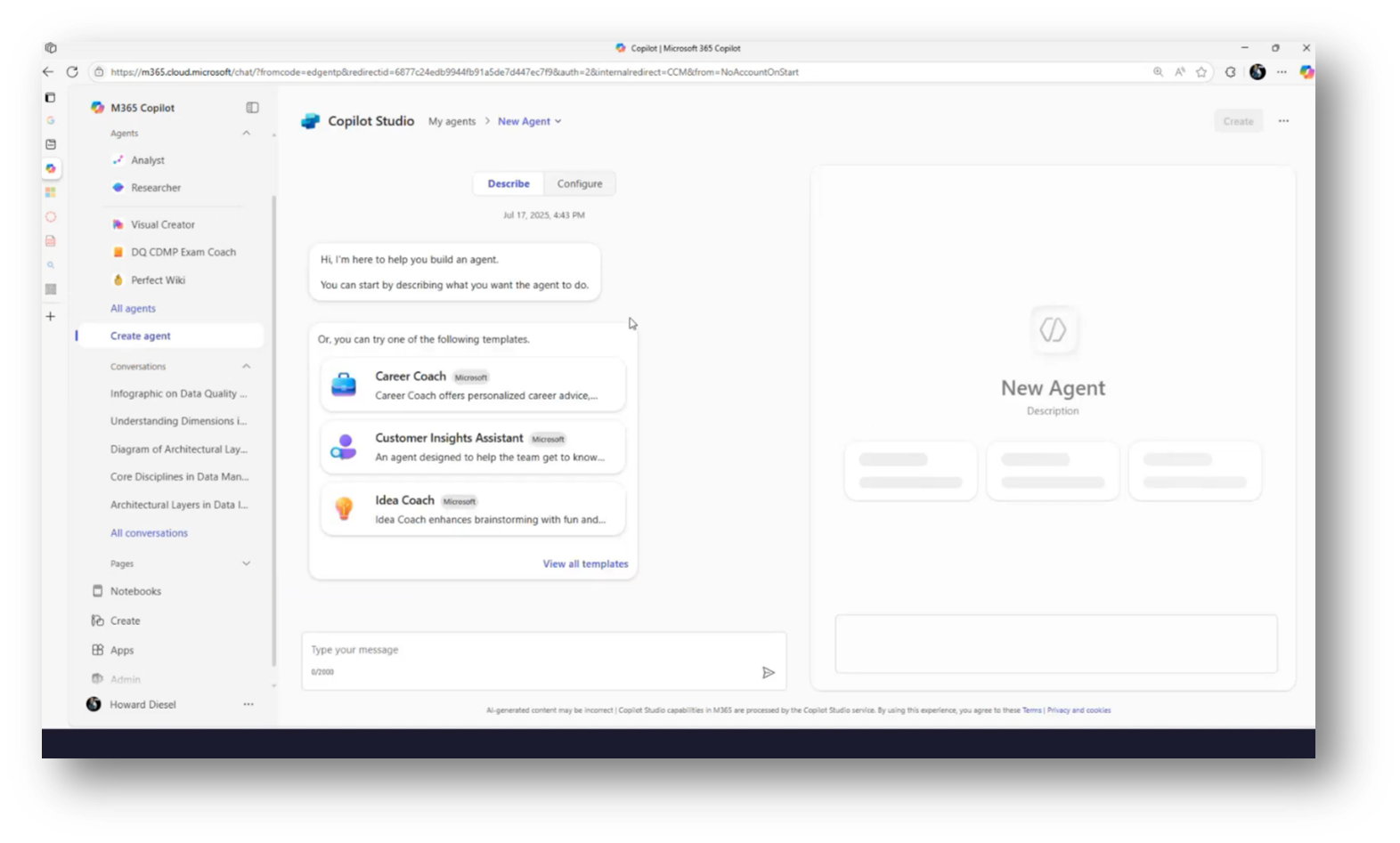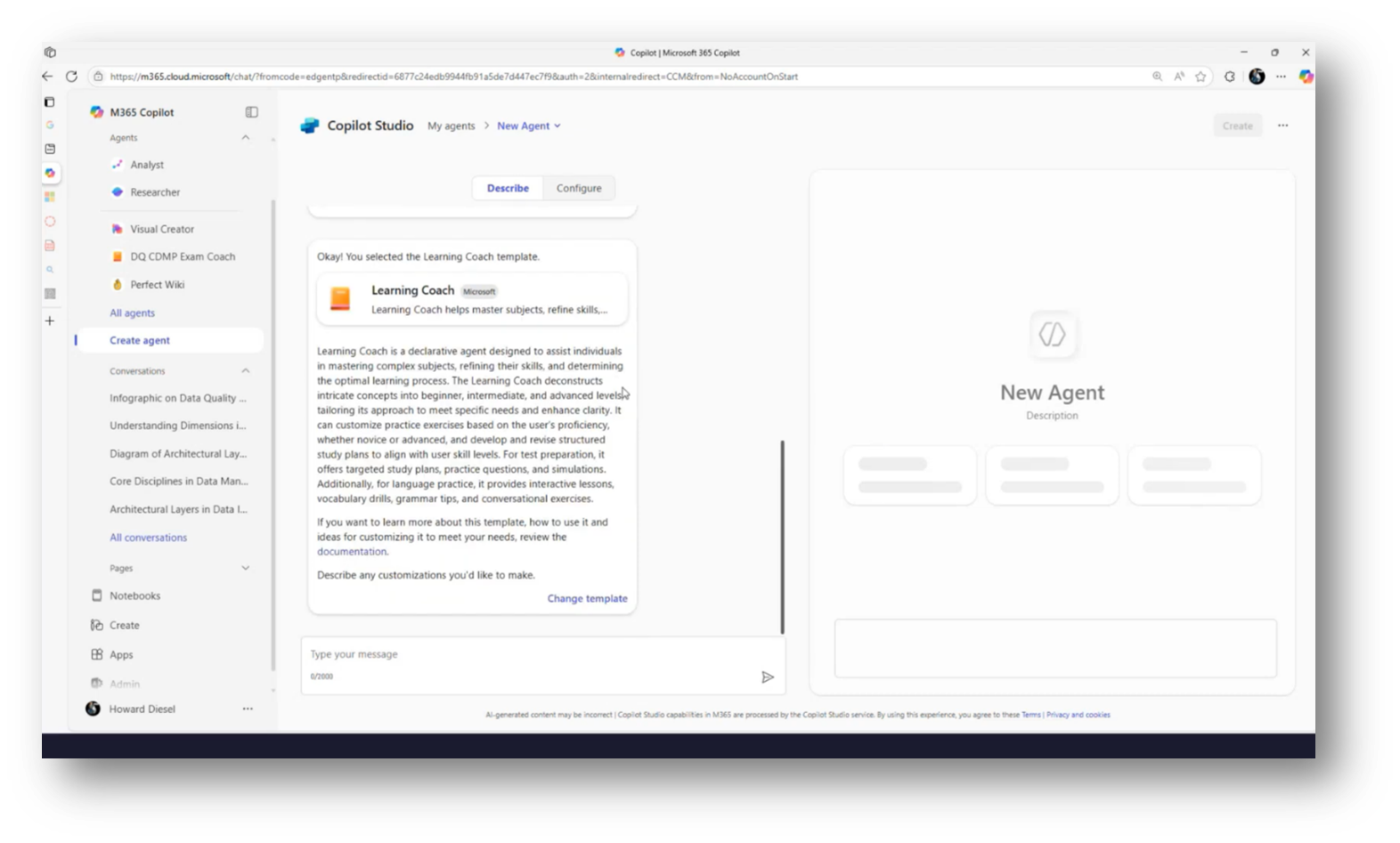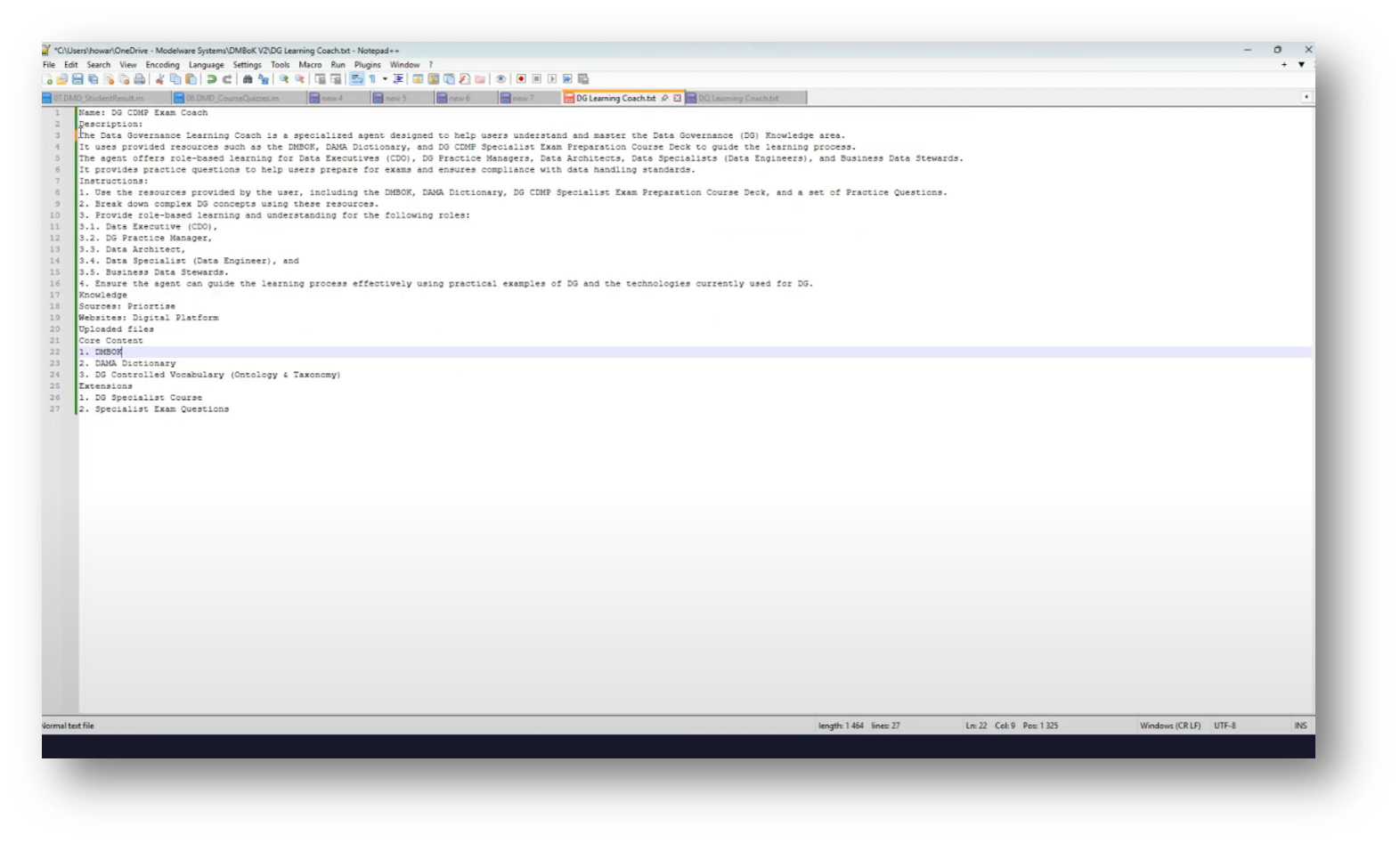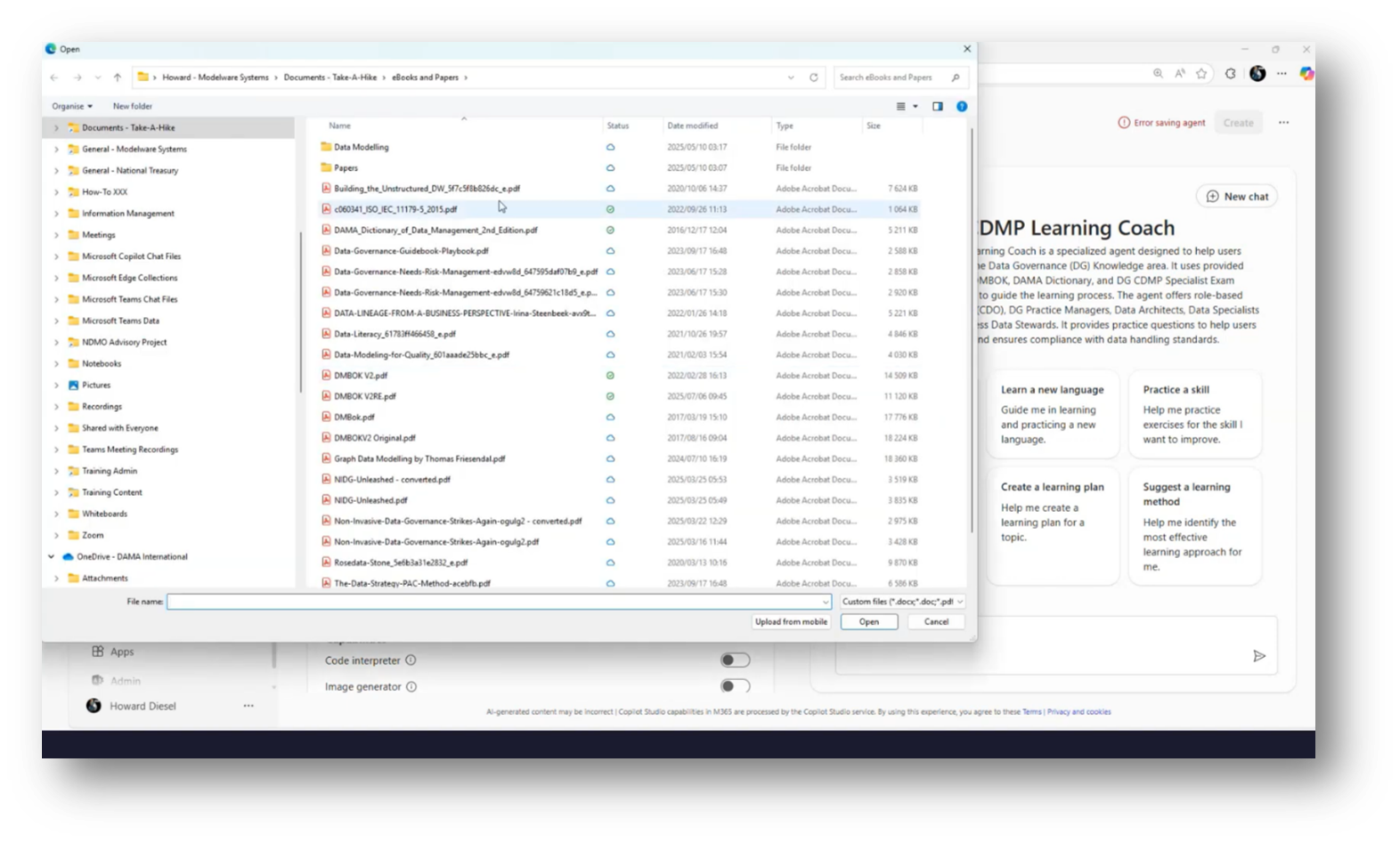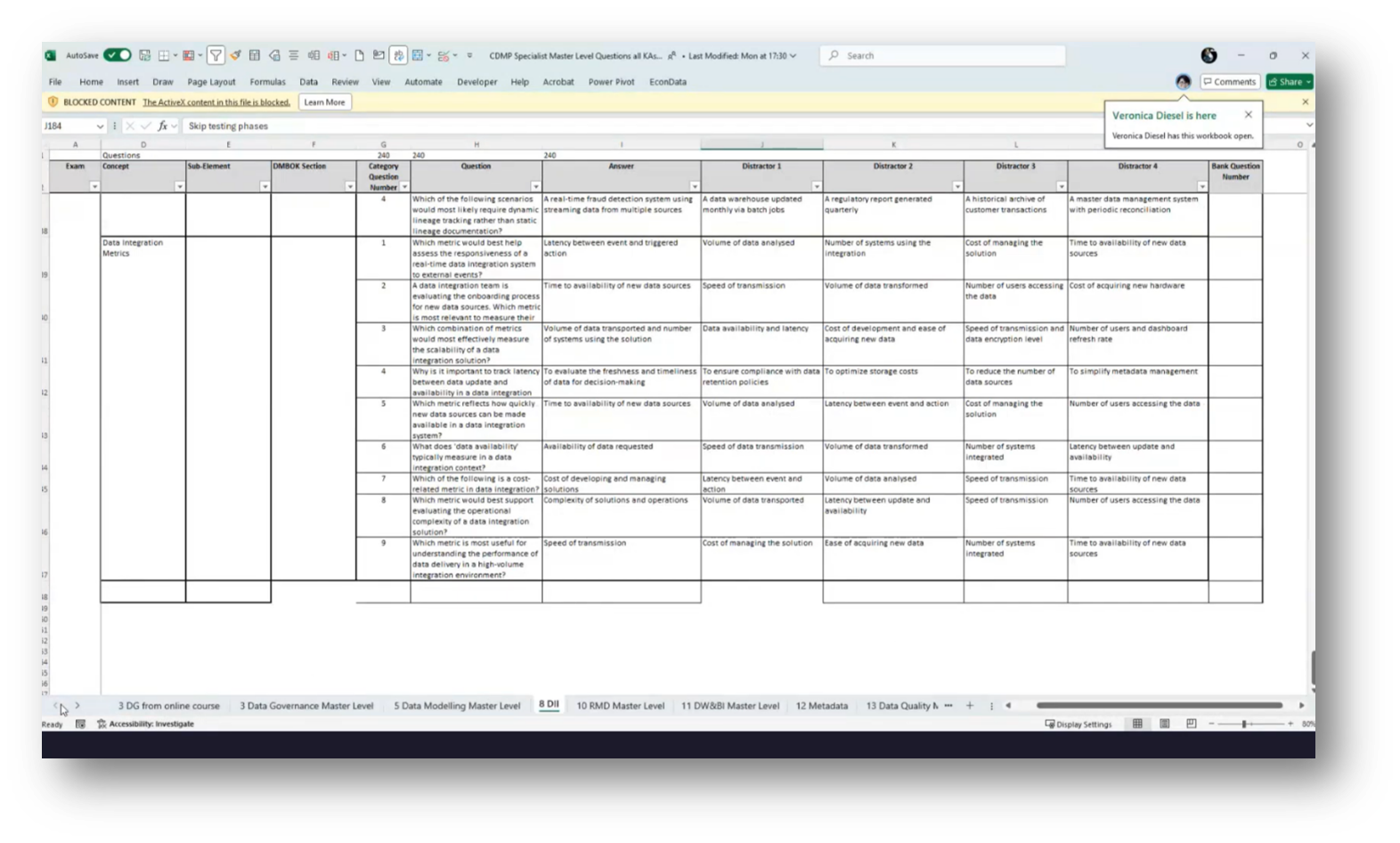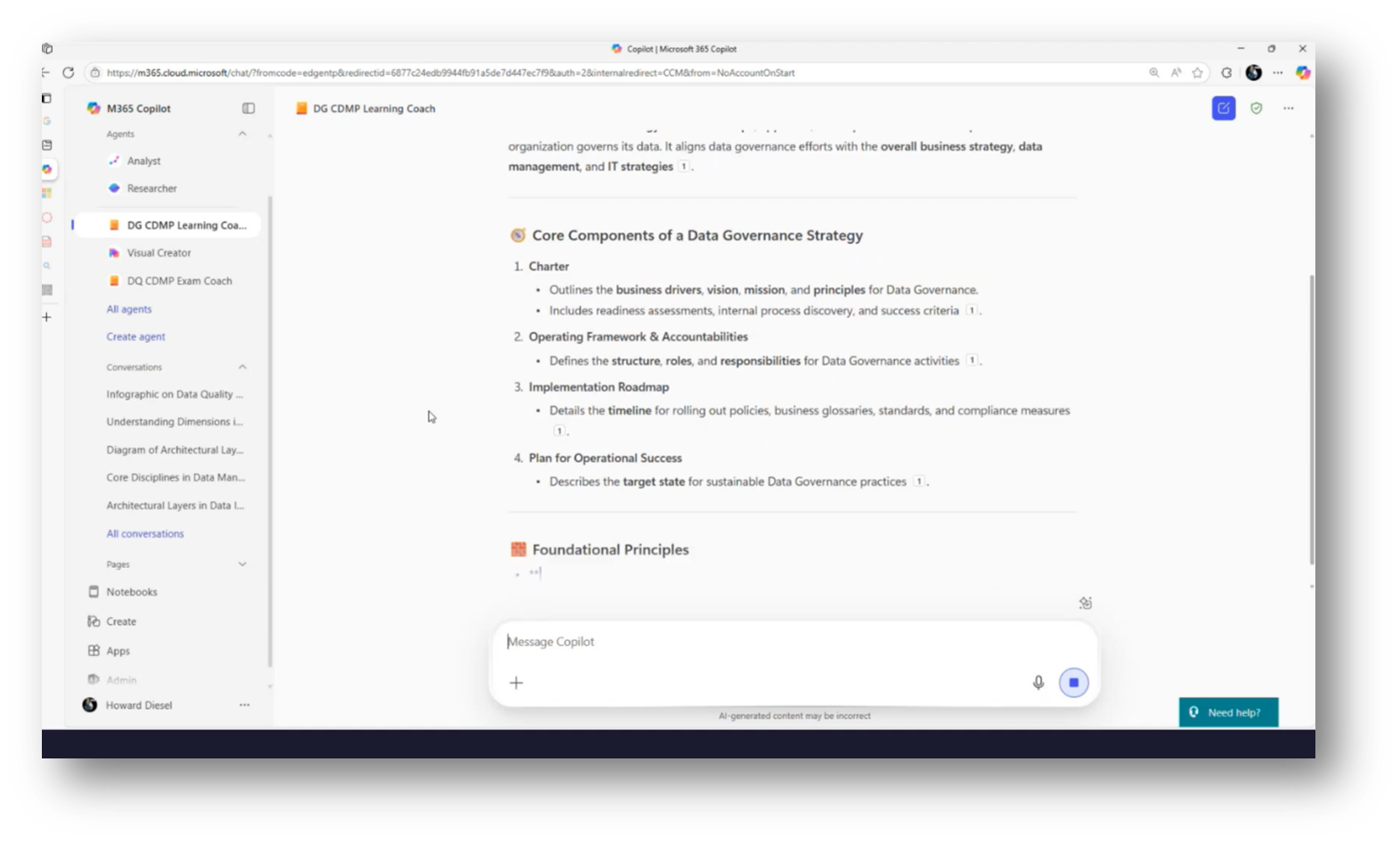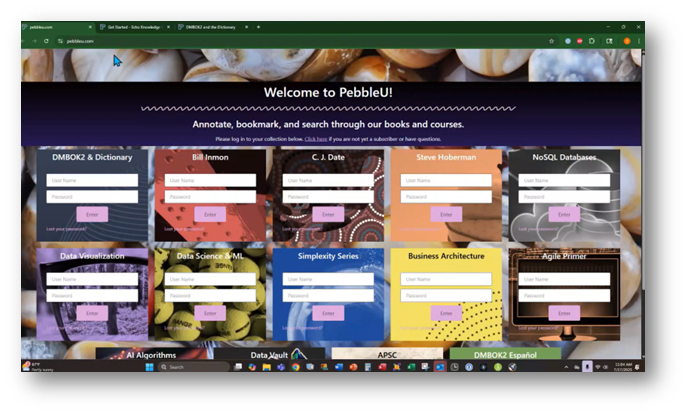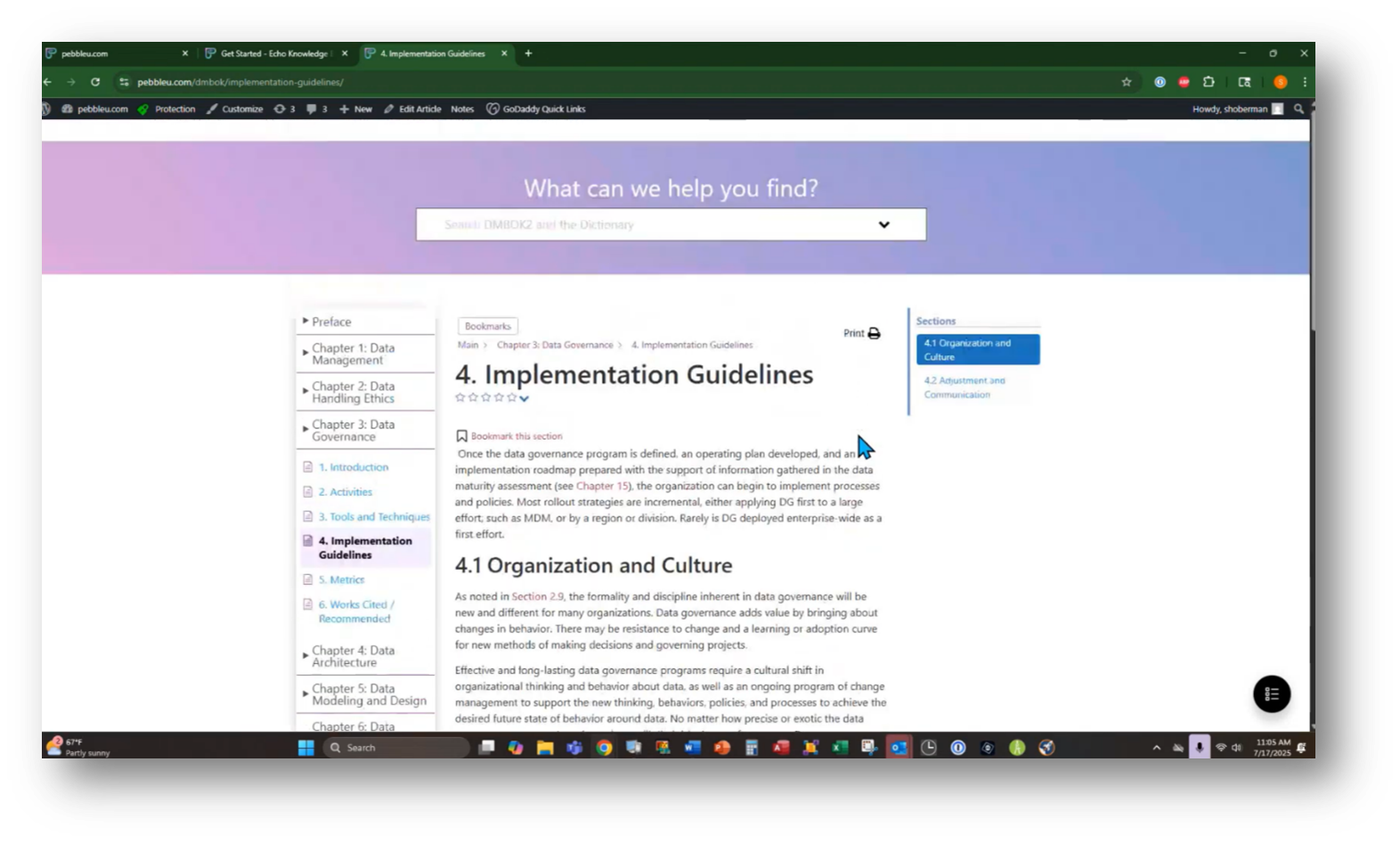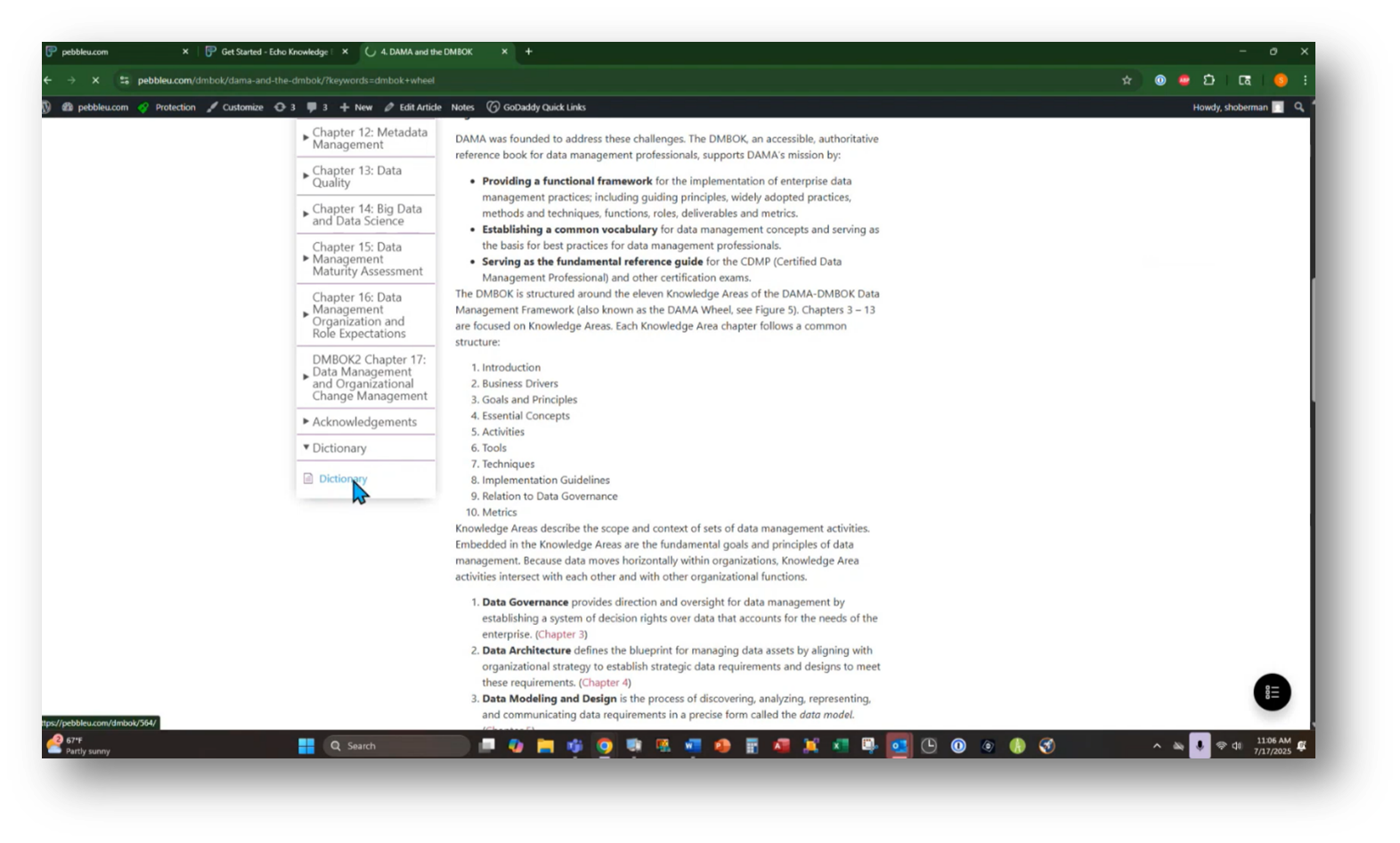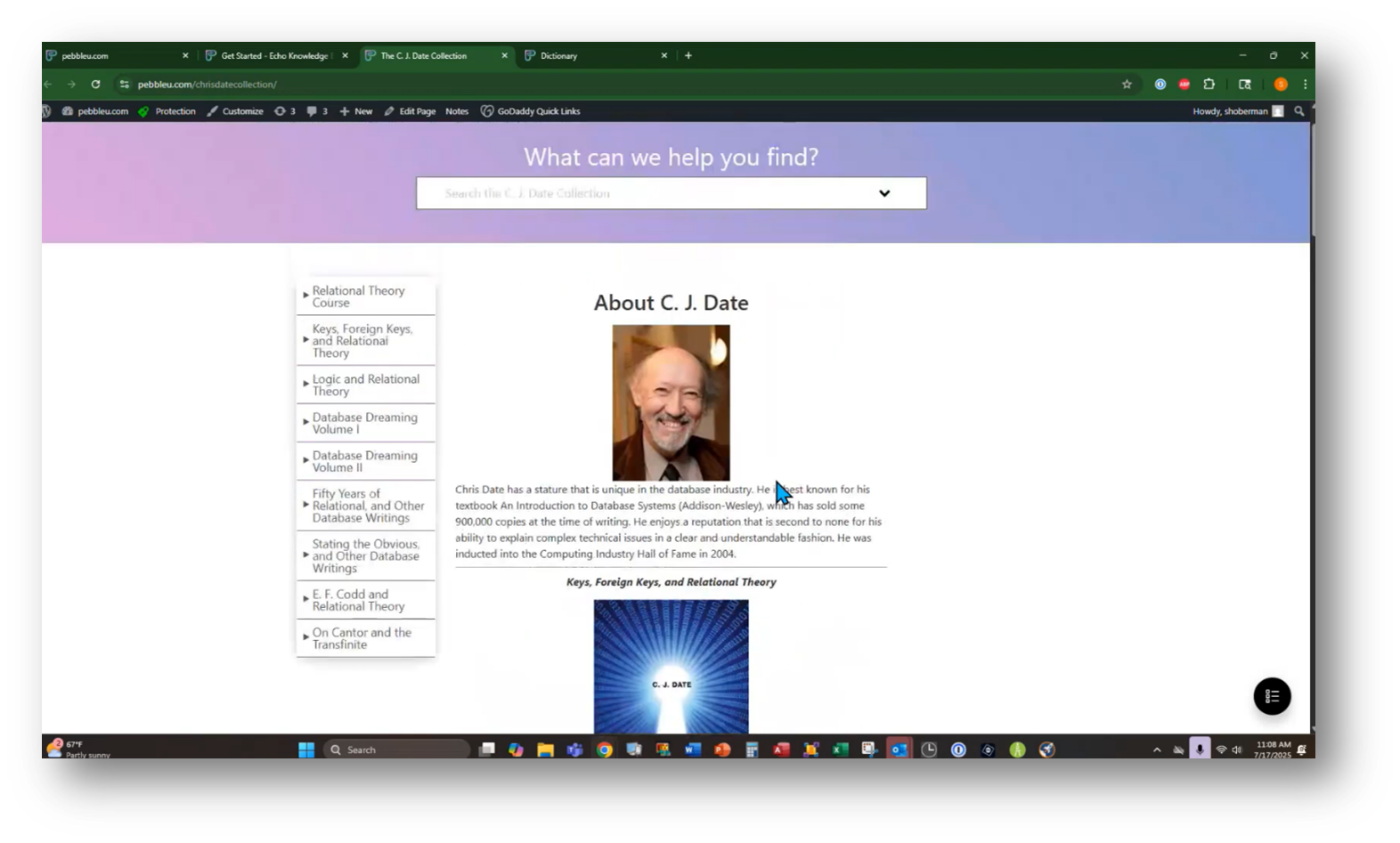Exploring the Data Management Body of Knowledge (DMBoK) for Data Professionals
Executive Summary
This webinar addresses key themes and challenges in the evolving landscape of data management, highlighting the complexities introduced by DMBoK Version 3. Howard Diesel examines the importance of strategic analysis and global collaboration in content creation, alongside the development of a comprehensive Knowledge Base Management System.
The evaluation of data sharing agreements with software is crucial for future advancements, as exemplified by the potential future of the DMBoK and the creation of innovative tools such as a Learning Coach integrated with Copilot. Furthermore, this webinar discusses the strategies and challenges faced in AI deployment, particularly within chatbots, and emphasises the importance of integrating these technologies. Howard concludes with the implications of technological evolution, the PebbleU project, and the necessity of navigating accountability in virtual workspaces and business operations.
Webinar Details
Title: Exploring the Data Management Body of Knowledge (DMBoK) for Data Professionals
Date: 2025-07-17
Presenter: Howard Diesel
Meetup Group: African Data Management Community
Write-up Author: Howard Diesel
Contents
The Challenges of DMBoK Version 3
Strategic Analysis and Global Collaboration in Content Creation
Development and Application of a Knowledge Base Management System
Evaluating Data Sharing Agreements with Software
The Potential Future of the DMBoK
Creating and Implementing a Learning Coach with Copilot
AI Strategies and Challenges in Chatbots
The Integration of a Chatbot
The Evolution of Technology
The Creation of the PebbleU Project
Navigating the Future: Technology, Thinking, and Accountability
Use of Virtual Workspaces and Policies in Business Operations
The Challenges of DMBoK Version 3
Howard Diesel opens the webinar and remarks on the recent feedback from the community regarding the Data Management Body of Knowledge (DMBoK) Version 3. He highlighted that the community feedback had more weaknesses and challenges than strengths, leading to a lack of interest in pursuing the CDMP with Version 2, which many users find outdated. The initial release of DMBoK Version 2 occurred in 2017, with a Revised edition launched last year (2024). The editorial board for DMBoK Version 3 is currently operational, focusing on preparing a strategic document that effectively delivers the content of the Data Management Body of Knowledge to the community.
Figure 1 DMBoK Version 2 and Version 3 SWOT Analysis
Figure 2 DMBoK SWOT
Strategic Analysis and Global Collaboration in Content Creation
The process of integrating community feedback began by conducting a SWOT analysis to assess strengths, weaknesses, opportunities, and threats. Following this, a TOWS (Threats, Opportunities, Weaknesses, and Strengths) analysis was performed to explore how identified strengths could be leveraged to address opportunities and mitigate threats.
This comprehensive evaluation generated 136 strategies, which were subsequently consolidated into a strategic theme. The team reviewed this theme during discussions to explore ways to expand outreach and increase participation in the DMBoK.
Howard noted that his focus was on enhancing community engagement and localisation through innovative content publishing strategies. Thus, he explored the development of an AI-powered chatbot, similar to the search feature of PebbleU, created by Steve Hoberman, to link diverse content and facilitate user navigation. The prototype aims to address key challenges related to data sharing agreements, procedural guidance, and the transition from procedural to technological approaches. Additionally, by providing answers to critical questions about "how," "who," and "when," the initiative aims to empower users and enhance their understanding of the content and processes involved.
The initiative aims to define a core topic, such as data sharing agreements in data integration, and encourage global contributions to enhance collaboration and promote a shared understanding. By outlining essential concepts and techniques for creating data sharing agreements, the project will facilitate the sharing of templates, metadata, and artefacts.
The focus includes engaging communities, particularly in open science and academia, while partnering with local DAMA chapters, such as those in South Africa and Calgary, to adapt content for local conditions, including relevant laws and regulations. This structured approach aims to foster a global collaboration platform that benefits all contributors.
Howard shared that there was an ongoing discussion about presenting a web-based interface for the DMBoK, similar to a project he was working on that involved a chatbot created using Lovable. He then sought clarification on the presentation format, while Steve Hoberman was encouraged to showcase a related website called "PebbleU."
Steve shared that PebbleU serves as an integration platform, allowing users to access content from enterprise servers seamlessly. The overarching aim is to facilitate user interaction with the platform in an IP-driven manner.
Figure 3 "Strategic Themes"
Figure 4 Strategy Consolidation and Aggregation
Figure 5 Excel Sheets - Aggregation
Figure 6 TOWS Theme
Figure 7 AI-Enhanced DMBoK Content Publishing
Development and Application of a Knowledge Base Management System
Howard showcased building an Agent with CoPilot, a Data Quality CDMP (Certified Data Management Professional) exam coach, using CoPilot. The Agent facilitates role-specific inquiries, such as exploring the dimensions and concepts of metrics necessary for setting up and implementing. The system allows users to interact from various roles and receive tailored information based on their queries.
With the created agent, Howard demonstrated a templated approach designed for comprehensive knowledge areas, along with instructions on roles, learning paths, and data sourcing. Howard shares that with the creation of the agent, it is possible to insert organised data quality content into structured folders within Teams. This facilitates the development of a chatbot capable of responding to inquiries based on organised content. Additionally, the chatbot will utilise pre-existing prompts for generating images and providing information, allowing users to engage with data quality resources and ask relevant questions efficiently.
Howard shared that by specifying requirements, he discovered that the chatbot could retrieve relevant insights from the DMBoK and the DAMA data dictionary. Additionally, the chatbot would reference the content found in the added training materials. Howard adds that CoPilot also features visualisation capabilities, allowing users to click on visualisations to see the prompts used to create them. Additionally, users can easily input these prompts to generate custom images for presentations or organisational use.
Figure 8 DQ CDMP Exam Coach: Why This Matters
Figure 9 DQ CDMP Exam Coach: How Dimensions Relate to Concepts and Metrics
Figure 10 Develop A Copilot Agent
Figure 11 DQ CDMP Exam Coach: Description
Figure 12 DQ CDMP Exam Coach: Characteristics of Effective Metrics
Figure 13 Copilot: Visual Creator
Figure 14 AI-Enhanced Data Management Content
Figure 15 How-To Extend
Evaluating Data Sharing Agreements with Software
The creation of a data sharing agreement and the development of a scorecard to evaluate its components were touched on. Howard shared that this was developed based on insights from a previous data modelling scorecard and that the focus is on establishing categories that collectively account for 100%. A key observation is the frequent absence of data quality requirements in these agreements. To address this, a scorecard has been designed specifically for data sharing agreements within the organisation, incorporating these necessary data quality elements.
Calibra stands out for its strengths in contractual modelling, workflow automation, and regulatory compliance, making it particularly suitable for managing data sharing agreements within Phonetica, which enhances quality SLA management.
In a recent assessment, Calibra scored 40 in one category and 25 in another. At the same time, Microsoft Purview received lower scores of 20 and 11, and Informatica achieved the highest rating in the data quality section. By analysing my sample sharing agreements with the appropriate references, I was able to obtain scores for these agreements, enabling streamlined automation in their management.
Figure 16 How-To Create a Data Sharing Agreement
Figure 17 Data Sharing Agreement Example
Figure 18 DSA Scorecard
Figure 19 DSA Technology Comparison
Figure 20 DSA Technology Comparison Pt.2
Figure 21 DSA Technology Comparison Pt.3
The Potential Future of the DMBoK
Howard highlights the transition of the DMBoK from conceptual aspects (why, what) to practical applications (how, where, who), enabling individuals to expand their capabilities as needed. A key point raised is the potential to present the created templates to the DAMA organisation for standardisation, although it's clarified that this proposal is based on personal insights rather than a commitment from the DMBoK. The overarching strategy aims to promote global collaboration and allow contributions at various levels.
The DMBoK initiative will primarily focus on defining the overarching framework, while the community can contribute to aspects such as implementation processes and collaborative efforts. This structure ensures the curation of essential content and access to vital resources, including templates, metadata, artefacts, and scorecards for assessing organisational maturity.
Howard noted that recent advancements could facilitate a rapid maturity assessment through an AI platform, providing a comprehensive evaluation within an hour. Additionally, these assessments could include user-generated ratings for templates on platforms like project-management.com, further enhancing their utility and quality.
Creating a community-driven business glossary similar to a wiki platform, where users can propose definitions and rate their trustworthiness, is suggested. This approach fosters collaboration while emphasising the importance of legal safety by ensuring that contributions are free from copyrighted material. Accountability for the content submitted is crucial to avoid legal issues. The concepts presented are potential strategies for maintaining a secure and reliable environment for collaborative content creation and sharing.
Howard then highlighted the need for global collaboration and a revised approach to the DM Box interface, emphasising the importance of managing content growth and keeping it dynamic without frequent updates. He noted that queries had been raised regarding the scope of DMBoK Version 3, specifically whether it pertains solely to DMBoK content or extends to developing a community platform. Currently, there are no defined parameters for the content or the digital platform; stakeholders have been directed to outline how interactions will occur and how content growth will be managed.
Creating and Implementing a Learning Coach with Copilot
The process involves using Copilot to create a custom internal template, referred to as the "learning coach," without relying on existing templates. Currently, two agents, DQ and DII, have been set up. To create a data governance CDMP learning coach, relevant content is compiled in a notepad, which includes a description and purpose that guide the development of necessary topics and instructions. Key components such as the DMBoK Version 2 (Revised Edition) and the DAMA Data Dictionary are integrated, alongside the option to enable image generation and include a custom training course on data governance.
Howard outlined the various courses available for maturity assessment training, emphasising the option to choose between all courses or specific ones. A current challenge mentioned is the need to keep PDF files under 30 megabytes. Additionally, it highlights the ongoing collaboration with Veronica to develop master-level exam questions, which aid in preparing individuals for the exam by organising and managing relevant questions effectively.
The evolution of the DMBoK was highlighted, as it has shifted from conceptual to practical applications, allowing individuals to enhance their project management skills. A dedicated platform, project-management.com, features operational templates and fosters community engagement. Furthermore, it was suggested that these templates could be presented to the DAMA organisation for standardisation, though this remains a personal insight rather than an official commitment.
Howard noted that the initiative aimed to promote global collaboration, with the DMBoK focusing on the overarching framework while the community contributes to implementation processes. Key resources, including templates, metadata, and scorecards for assessing organisational maturity, are curated, alongside a recent AI-facilitated maturity assessment that provides valuable insights for users.
Figure 22 Copilot Creating an Agent
Figure 23 Adding a Description to Learning Coach
Figure 24 Develop A Copilot Agent: Knowledge Base
Figure 25 Develop A Copilot Agent: Knowledge Base Pt.2
Figure 26 DII Exam Questions
Figure 27 Figure 25 Develop A Copilot Agent: Knowledge Base Pt.3
Figure 28 DG CDMP Learning Coach
AI Strategies and Challenges in Chatbots
The framework consists of four key components that facilitate user engagement with the DMBoK by providing references and access to various areas within it. While it does not pinpoint exact locations, it allows users to explore foundational principles, key activities, and readiness assessment deliverables while offering examples of strategic deliverables.
This streamlined approach enables organisations to create tailored AI strategy frameworks that effectively utilise their unique content. By developing a chatbot that interacts with this curated content, organisations can enhance information retrieval while maintaining proprietary methods without direct reliance on AI-generated guidance. Additionally, policies or procedures related to the dataset can be organised and stored systematically for easy access and reference.
An attendee shared their concern about utilising tools like Copilot and large language models because of potential hallucinations, which can occur and may be taken as definitive truth. Additionally, Howard noted that when using N8N, one can program chatbot responses to handle situations where content is unavailable, ensuring that users receive accurate policy definitions and links for further reference, thereby minimising misinformation.
When using Copilot, it's important to consider data privacy and security, as the tool operates within your organisation’s domain. Users should exercise caution when uploading sensitive information, such as top-secret policies, as there is a risk that this data could be exposed to external environments. Always verify the security measures in place before manipulating confidential data to ensure it remains protected.
Figure 29 DG CDMP Learning Coach Pt.2
The Integration of a Chatbot
Howard discussed the integration an API platform, N8N, into an existing site to enhance content accessibility through a chatbot. N8N serves as a server environment where users can back up their published content and control access via API keys and version control. This approach offers greater flexibility compared to more restrictive options, such as Microsoft Copilot, which was mentioned as a potential tool. Ultimately, the goal is to utilise N8N's visual orchestration capabilities to create a user-friendly interface for the chatbot, while facilitating the management of user access and published resources.
The proposed system is designed for website integration, where it directs calls to a service that queries a database (referred to as the rag database and pine cone) to extract relevant information. If the system finds matching content, it utilises a conversation-driven approach through the LRM to relay the information back to the chat interface. Conversely, if no relevant data is found, it simply indicates a lack of knowledge about the content.
The Evolution of Technology
The current monetisation model for many AI services operates on a token-based system, where users purchase a set number of tokens to make requests, with payments typically made in U.S. dollars. An attendee highlighted a significant shift in data monetisation strategies, emphasising how corporate engagement with curated content is evolving. Additionally, as the landscape evolves, particularly with the rise of technologies such as large language models (LLMs) and ChatGPT, traditional methods of accessing and interacting with data are being challenged.
Howard shared a conversation with a friend whose son recently graduated in business information systems, and is quickly adapting and utilising tools like N8N. Overall, the focus is on striking a balance between controlling access to data and effectively leveraging emerging technologies.
Figure 30 PebbleU
Figure 31 PebbleU Pt.2
Figure 32 PebbleU Pt.3
Figure 33 PebbleU Pt.4
The Creation of the PebbleU Project
During the COVID-19 pandemic, Steve Hoberman developed a project called PebbleU, inspired by the collective desire to acquire new skills while many were confined to their homes. Recognising the opportunity to leverage our extensive collection of over 150 published books on data, including the DMBoK, the goal was to create concise, digestible content that allows individuals to acquire interesting knowledge in just a few minutes, enabling them to integrate learning seamlessly into their daily routines. The name PeppleU reflects this concept of delivering small, bite-sized pieces of valuable information.
The main screen of the Pepple platform features a search function that allows users to explore a collection of works, such as those authored by Bill Inmon, whose 15 published books can be searched through this feature. While currently resembling a traditional search engine like Google, the platform does not utilise AI.
Users can log in to DMBoK, where a Kindle-like interface enables navigation through various sections of the dictionary, complete with subcontents for complex areas. Additionally, the platform enables users to rate templates using star ratings and provide feedback on specific sections, sharing personal experiences or offering suggestions for improvement. While the search function can retrieve information from multiple sections, discussions in recent meetings have considered the potential integration of AI capabilities to enhance the user experience.
The product in question includes comprehensive content along with a searchable dictionary, which was developed based on the creator's interest rather than market research indicating demand. Despite its innovative features, the product, PeppleU, has garnered fewer than 100 purchases, likely due to users' comfort with traditional formats such as PDFs and printed books. The creator suggests that a shift in mindset is needed as printed books may eventually become less dominant. The potential of integrating AI to enhance the product by adding more documents and regulations could increase its value and usability, especially for those who have authored multiple works and seek efficient ways to access references.
The platform offers access to a variety of content similar to music streaming, allowing users to explore works by authors like Chris Date, who has authored several published books available for search. Additionally, users can access recorded classes, including an extensive series of instructional videos on database design presented by the author. This versatile platform offers a convenient way to access a wide range of educational resources.
The concept of utilising a chatbot on a website to recommend books based on user queries, while ensuring that limited content is provided, was mentioned, noting the importance of training and API considerations for optimal performance. Overall, the conversation emphasised the potential for extending current strategies to facilitate better user experiences.
Navigating the Future: Technology, Thinking, and Accountability
Howard highlighted the importance of understanding their thought processes and paradigms of thinking as they navigate a rapidly changing world. He suggested that inviting younger individuals to share their perspectives could provide valuable insights into their way of thinking, helping to bridge the generational gap and enhance relevance in communication and collaboration.
The perspective that individuals often view the world through the lens of their own experiences, which can lead to challenges in understanding others' approaches, was discussed, particularly among younger generations. It was highlighted that young people tend to be fearless, taking risks without considering potential consequences, which creates a distinct paradigm that presents unique opportunities. However, navigating these opportunities often involves considerations of financial, legal, and corporate influences.
Use of Virtual Workspaces and Policies in Business Operations
Howard closed the webinar by highlighting the excitement around new tools and workflows, particularly related to setting up policies and procedures. The attendees expressed interest in exploring these tools themselves, with a focus on creating custom content that is easy to search and manage. Lastly, Howard underscored the efficiency of transitioning from context diagrams to actionable policies and procedures, noting the impressive speed with which these processes could be automated using the Calibra platform.
If you would like to join the discussion, please visit our community platform, the Data Professional Expedition.
Additionally, if you would like to be a guest speaker on a future webinar, kindly contact Debbie (social@modelwaresystems.com)
Don’t forget to join our exciting LinkedIn and Meetup data communities not to miss out!


